






































It's easy to keep your skin safer in the summer sun if you have the right sunscreen.
UCLA Health offers some tips for picking the best type and SPF level.
Getting sunburned just five times in a lifetime doubles the risk of getting melanoma, the most serious skin cancer, so making sure you're protected is worth the effort, the experts at UCLA Health said in a news release.
Types of sunscreens can be divided into two categories: mineral and chemical. Each type has its pros and cons. Mineral sunscreen sits on the skin's surface. It physically blocks ultraviolet (UV) light before those rays can penetrate the skin.
While offering instant protection, it can be harder to rub in, needs to be applied more frequently and tends to leave a white film on the skin. Yet, it's also gentler than chemical sunblock, making it a good choice for sensitive skin, according to UCLA Health. Mineral sunscreen contains titanium dioxide and zinc oxide, both recognized as safe and effective by the U.S. Food and Drug Administration.
Chemical sunscreens allow UV light to penetrate skin, after which the chemicals convert the UV light into heat. This is released from the skin.
The downsides are that chemical sunscreens need to be applied at least
20 minutes before sun exposure and there are concerns about the ingredients in chemical sunscreens, especially oxybenzone, according to UCLA Health.
Some of the ingredients in these sunscreens may cause environmental issues, including damage to coral reefs. They may also pose health risks such as hormone disruption and allergic skin reactions.
Yet, they're also easy to rub in and leave less residue.
The FDA is waiting for more safety data before labeling them as safe and effective. Experts say the health risks of sun exposure far outweigh the potential risk of absorbing sunscreen chemicals.
When choosing the SPF, or sun protection factor, know that the higher the number, the longer the protection should last. With SPF 30, for example, it should take you 30 times longer to burn than if you weren't wearing sunscreen. But there's more to it than that.

All sunscreens protect against UVB rays, the main cause of sunburn and skin cancers. Broad-spectrum SPF also protects against UVA rays.
Sunscreen that is SPF 30 lets 3% of rays through. A higher protection number, SPF 50, allows 2% of rays through.
It's important to reapply, especially if you're sweating and swimming. The Skin Cancer Foundation
recommends using water-resistant, broad-spectrum sunscreen with SPF 30 or higher. You should reapply every two hours or immediately after swimming or sweating.
SPF protection above 50 is only slightly better than SPF 30, so reaching for a higher number doesn't matter as much.
What's important about the application method is this: what you are more likely to use and reapply.
If that's lotion, the Skin Cancer Foundation recommends applying at least 1 ounce, which is also 2 tablespoons or the amount that fills a shot glass.
For spray, keep applying until your skin glistens. The bottle may say “no rub,” but smoothing it into
your skin will ensure even coverage. Avoid using aerosol sprays on or near your face because they can contain ingredients that, when inhaled deeply, may cause irritation and possibly damage your lungs.
It may be better to avoid spray for young children, but you can also spray it onto hands and rub it onto your face or your child.
Stick sunscreen is great for small areas, such as the face and ears. Make four passes with the sunscreen over each area you're protecting, UCLA Health advises. Rub the sunscreen in afterward, for even coverage.
Even with this protection, opt to seek shade and wear protective clothing whenever possible.
Everyone deserves to be cared for and to live well. So, at Excellus BlueCross BlueShield, we’re more focused than ever on making care more accessible in our community. Through affordable plan options, community investments, partnerships and education, we’re working to address inequities to make Upstate New York a better place to live. We’re proud to celebrate the LGBTQ+ community and work toward a world where everyone feels affirmed and respected.



Getting you better, sooner. It’s why more patients are choosing Crouse Health — and why our minimally invasive robotic surgery program continues to grow. In fact, Crouse has the largest robotic surgery program in the region, with the most surgeons performing a wide variety of procedures — morethan15,000 since 2008. The result? The most experienced team using the latest innovative techniques to get you back to health faster. And more reasons to say,“Take Me to Crouse!”
crouse.org/robotics

Here are five ways to fight bad breath and keep your mouth smelling clean and fresh.
1. Brush up on your dental routine
Brushing at least twice a day for a minimum of two minutes each can help keep halitosis away, according to the Cleveland Clinic. Use a soft-bristled brush and replace it every three to four months to ensure your breath is clean and fresh.
Flossing is just as important as brushing, because it removes food from between your teeth so that bacteria can’t flourish there. Try to floss at least once a day.
The clinic also suggests using an antibacterial mouthwash that’s alcohol-free and scheduling regular dental cleanings to optimize your oral health.
2. Try tongue scraping
The Cleveland Clinic explains that while brushing your tongue can help with bad breath, “tongue scraping can do a better job at removing that plaque and bacteria off the tongue’s surface.”
The clinic advises using a stainless steel, plastic or copper tongue scraper after every brushing and flossing.
3. Deter dry mouth
According to the Mayo Clinic, there are a number of ways to keep dry mouth at bay, including drinking plenty of water, chewing sugar-free gum and sucking on candy. It also suggests avoiding tobacco products, sodas and coffee because these tend to suck the moisture out of your mouth.
4. Spice it up
One simple and effective way to keep bad breath at bay is by eating fresh or dried parsley leaves. And this spice isn’t the only one that has shown some success in helping alleviate the condition.
According to a study published in the Journal of Agriculture and Food Chemistry, ginger is also an effective natural remedy for fighting bad breath.
5. Eat for fresh breath
While some spices are good for bad breath, the Mayo Clinic recommends avoiding garlic, along with onions. In addition, foods with added sugar may increase your risk of developing halitosis.
If you have been practicing good hygiene and your bad breath is lingering, the Cleveland Clinic suggests talking to your dentist or health care provider. They can help determine if there’s an underlying cause for your bad breath, such as gum disease or other health issues. From there, they can provide you with the most appropriate treatments.


Q: What brought you to Auburn?
A: It was a sudden interest. My two long-time partners and I were working at St. Joe’s for 17 years. We got involved in some corporate downsizing and they closed our practice. I knew a PA in Auburn who had formerly worked at St. Joe’s and talked to him about spine surgery in Auburn. I knew they had done some in the past and had brought a couple surgeons up from Walter Reed Hospital. The PA said, “Well, I’m standing next to the chief medical officer right now, and we’re thinking about hiring a spine surgeon.” Next thing I know I’m talking to [Auburn Hospital CEO] Scott Berlucchi and the administrative team. One thing led to another and I started there May 1st.
Q: As an orthopedic spine surgeon, what kinds of conditions are you generally treating?
A: Generally speaking, I treat everything from the base of the skull to the pelvis. I treat mostly adult degenerative conditions, such as herniated disks. If there’s pressure on a nerve, we’ll take that off. I do spinal fusions. I also treat spinal deformities.
Q: Are we moving away from spinal fusions as an intervention, or are they still common?
A: We’re still doing a lot of spinal fusions, probably more than we were doing, say, 30 years ago. We do have
their neck, we do fusions. Spinal tumors that you take out can also cause instability, so we use spinal fusions quite a bit. Now, someone comes in with a simple herniation pushing on a nerve without spinal instability or simple spinal stenosis, we can often do those procedures without fusions. But we do use fusions in a lot of cases. For neck, for the right individuals, we are doing disk replacements instead of fusions. Usually the right individual is a bit younger, usually between 20 and 50, 55. And they don’t have collapse of the disk space or any instability or alignment issues. But in a lot of other cases we’re doing fusions.
Q: Other than age, what are the big causes of disk herniation that you see?
A: Disk herniations can happen to anyone. A lot of the time it’s overuse, sports injuries. Tiger Woods has had some back problems, a couple of diskectomies. So they’re putting a lot of force through their backs. Twisting a lot can damage the outer layer of the disk, causing it to tear. And a tear can lead to a disk herniation. As we get older, our disks don’t hold water as well and you get little tears on the outer layer of the disk which allows the “jelly” in the “jelly doughnut” to come out. That creates a disk herniation as well. So a lot of it is on a continuum of chronic degeneration as
multi-factorial, but it can be accelerated by certain activities.
Q: What are the outcomes of these procedures like? Are patients usually able to go back to the same activities and perform at a similar level?
A: If you do a simple diskectomy on, say, a professional golfer, you can go in and shave that disk down. After they rehab a bit they can go back to their regular activities. That disk is obviously damaged from the process, but many go back to regular activities. There was a Buffalo Bills football player this year who had to go into reserve because he injured his neck. He ended up having a spinal fusion on his neck. There was talk about him coming back in the playoffs. So you can have a one- or two-level fusion and come back and play professional football. Now if you do a big, multi-level, multiple vertabrae lumbar fusion on somebody, they’re not going to go back to playing professional football. But they can do things like exercise, ride bikes. Some can run, hike mountains as well.
Q: I noticed on your C.V. you have a doctorate in philosophy of anatomy from way back. What is that?
A: That was in the department of anatomy and cell biology. My late mentor had his doctorate in it as well. He and a local, retired orthopedic surgeon had a many-year investigation into limb deformities that they were developing. I did some work on the basic science side of that. So anatomy and cell biology, we’re the guys who teach gross anatomy in medical school. So they do a variety of research into general anatomy and cell biology. Most of it these days is on the cellular and sub-cellular level, but back when I was doing it I was doing some classic embryology and studying chicken embryos, checking them for limb deformities.
Q: Does having a deep understanding of spinal mechanics make you more cognizant of how you move?
A: Yeah, I mean, I’ve done a lot of impact sports over the years. I’ve had a disk herniation myself in my lower back. I didn’t need surgery for it. A lot of these things will get better without surgery if you give it time. I used to downhill ski race. I used to play rugby. Now I don’t do any of that stuff. It’s all low impact. Hiking, biking. But it is something I’m very conscious of because I do see the impacts of what happens when things aren’t going well in the back.
Name: Robert S. Nolan, M.D.
Position: Orthopedic spine surgeon at Auburn Community Hospital
Hometown: Liverpool
Education: Medical degree, SUNY Health Science Center at Syracuse (2000); orthopedic surgery residency, SUNY Health Science Center (2005); fellowship in orthopedic spine surgery, State University of New York at Buffalo (2006)
Affiliations: Auburn Community Hospital, SUNY Upstate University Hospital
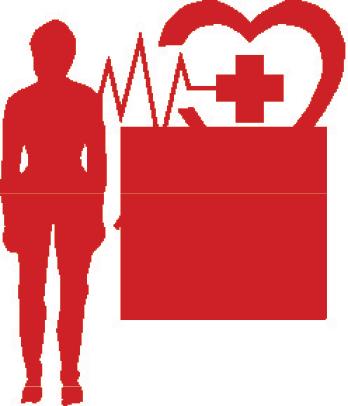
Organizations: American Academy of Orthopedic Surgeons, North American Spine Society; American Board of Orthopedic Surgery
Family: Married, three daughters, two sons
Hobbies: Hunting, fishing, hiking
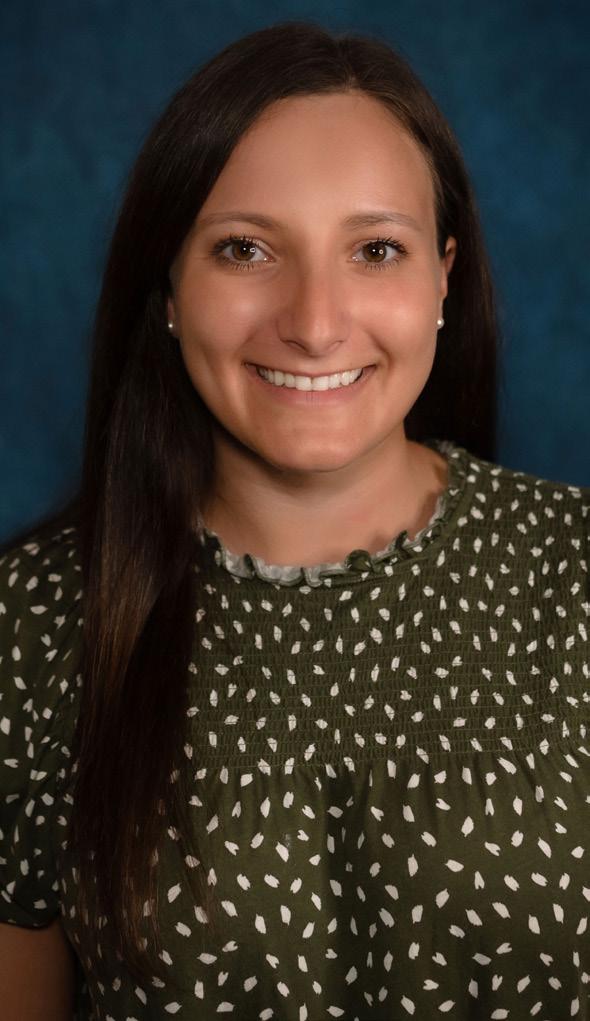


Say
Fulton, Mexico, Oswego Parish, Phoenix, Pulaski
www.connextcare.org
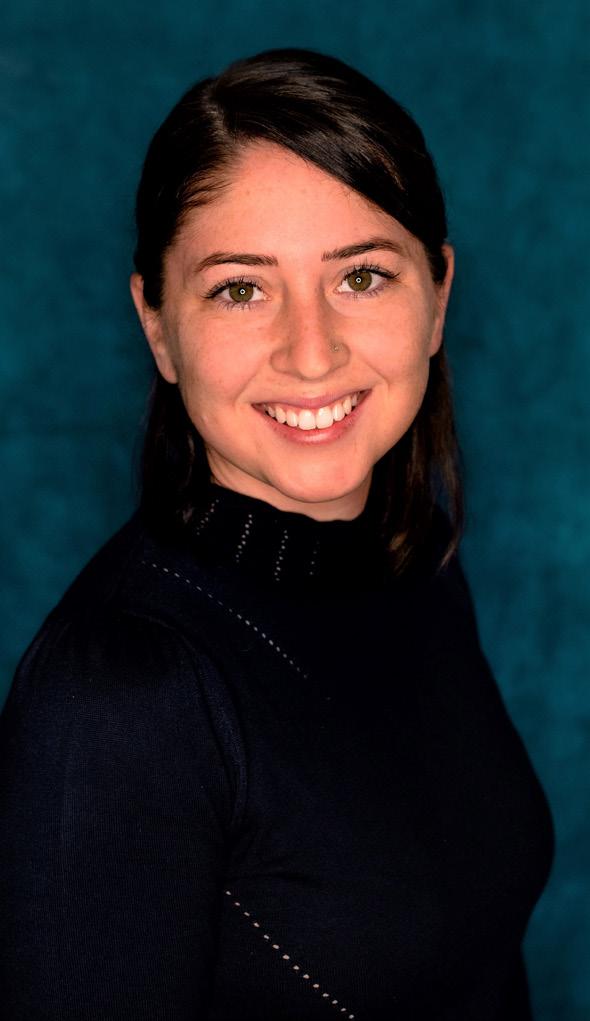














Say hello to the ConnextCare Central Square team. Call today.

First, on the provider side, things are bleak. Nineteen hospitals closed last year due to bankruptcy. Industry experts estimate 630 hospitals are on the brink of financial disaster this year. Two hundred of those shaky hospitals serve rural or isolated populations. The pandemic hit nurses and physicians hard. We are entering a veritable crisis in nursing. The ANA estimates we will need 275,000 more nurses between now and 2030. The nursing shortage is worse than any other profession. The AMA estimates we will need between 38,000 and 124,000 more physicians over the next 12 years. And to make matters worse, the US population is aging. But the news isn’t all bad. The top six insurance companies made more than $41 billion last year. United Health Group lead the pack with $20.6 billion. The next five were Cigna $6.7 billion; Elevance, $6 billion; CVS, $4.2 billion; Humana, $2.8 billion; and Cetene, $1.2 billion.

As if things aren’t difficult enough for financially struggling hospitals, Centers for Medicare & Medicaid Services (CMS) is seemingly piling it on by stepping up enforcement of the requirement for hospitals to post prices for several select procedures online for the sake of transparency. Cash strapped hospitals are being fined hundreds of thousands of dollars. By posting prices, consumers can (supposedly) shop around for CT scans, surgery and other procedures. There are problems with the price posting requirement. First, most of us, if we know it or not, are in an organized hospital-centric
healthcare system. Your physician is going to refer you to providers within the system, limiting your choice of a hospital or CT scan. Although your insurance may allow you to go to any participating provider (shop around), for the sake of continuity you are better off staying within your system. Second, 90% of us are insured so none of us will ever pay the full price. It is irrelevant. Your commercial insurer has negotiated what it will pay on your behalf. Medicare and Medicaid have set what they will pay on your behalf. Your copay (or deductible) is determined by your insurer. We have all seen an “explanation of benefits” letter from our insurer indicating the hospital “priceorcharge” and what the insurer ultimately paid. The difference is typically astounding. Third, unlike a car or article of clothing, a hospital price has nothing to do with quality. It is a meaningless number so shopping around based on price is a fool’s errand. Out-of-pocket expenses are the price we pay. Most hospital billing offices can give you a good idea of what you will pay out of pocket based on your insurance.
If a country (England, Canada, France, Germany, Sweden, etc.) provides universal care for all, critics decry it as socialism. In our country, critics call Medicare and proposed “Medicare for all” plans nothing more than socialism. So, is Medicare still socialism when it is managed by a commercial carrier? Humana made $2.8 billion last year. Virtually all their business and profits were derived from running Medicare and Medicaid plans. United made more than $20 billion last year. One third of their business (and profit) was derived from Medicare and Medicaid plans. We pay into Medicare via payroll taxes all our life. Then, we are still faced with paying more via deductibles, copays and coinsurance. Now commercial insurers are raking in huge profits. But at least it’s not “socialism!”
Even a study recently published by JAMA (Journal of the American Medical Association) concurs. According to the study, chatbots answered more patient queries quicker and with empathy when compared to written physician notes. But instead of replacing physicians, the study proposes that chatbot + MD = better care. In fact, AI should assuage the projected physician and nurse shortage by freeing them up to focus on more critical cases.
The American Psychological Association has developed science-based guidelines regarding social media use by teens. There has been a surge in depression, anxiety and loneliness among teens and young adults attributable to social media. The guidelines are directed primarily at teens, parents, counselors and teachers. The APA recommends teens should receive training on the use of social media and parents should monitor social media use and limit screen time.

I discussed this briefly last month. In various studies, consumers are very satisfied with AI or chatbots.
In a week (as of this writing in early May), a federal three judge panel will determine the fate of the medical abortion pill. All three- judges have a history of ruling against abortion access or have stated an anti-access position. Most national polls and surveys reveal the vast majority prefers that mifepristone remain available on the market.

I have written about the fact that medical debt is the leading cause of bankruptcy in our country. The good news is that medical debt can no longer be considered by credit-rating companies. A reader of my column forwarded me some more good news. A nonprofit called RIP Medical Debt can help. Its website address is https://ripmedicaldebt.org.
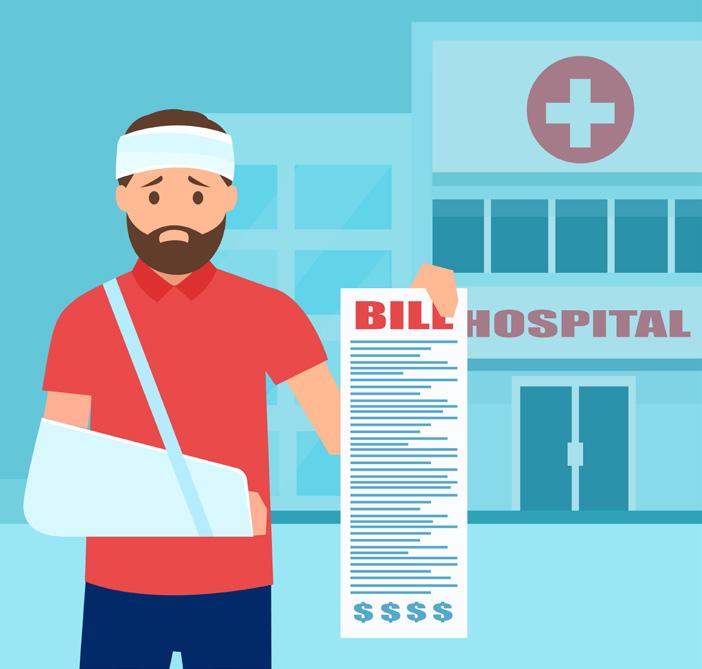
George W. Chapman is a healthcare business consultant who works exclusively with physicians, hospitals and healthcare organizations. He operates GW Chapman Consulting based in Syracuse. Email him at gwc@gwchapmanconsulting.com.

19 hospitals closed last year due to bankruptcy. Another 630 are on the brink of financial disaster this year. Meanwhile, insurers post strong profits
Fewer U.S. adults are smoking cigarettes, as rates dropped again last year, according to federal health officials.

In all, one in nine American adults smoked cigarettes last year, an all-time low, and a significant change from the 1960s when 42% smoked.
The results weren't all positive, the Associated Press reported, as vaping rose to about one in 17 adults. For 2022, use of electronic cigarettes was about 6% compared to 4.5% the year before.
These preliminary findings are from a survey of more than 27,000 adults by the U.S. Centers for Disease Control and Prevention. The findings are sometimes revised after further analysis.
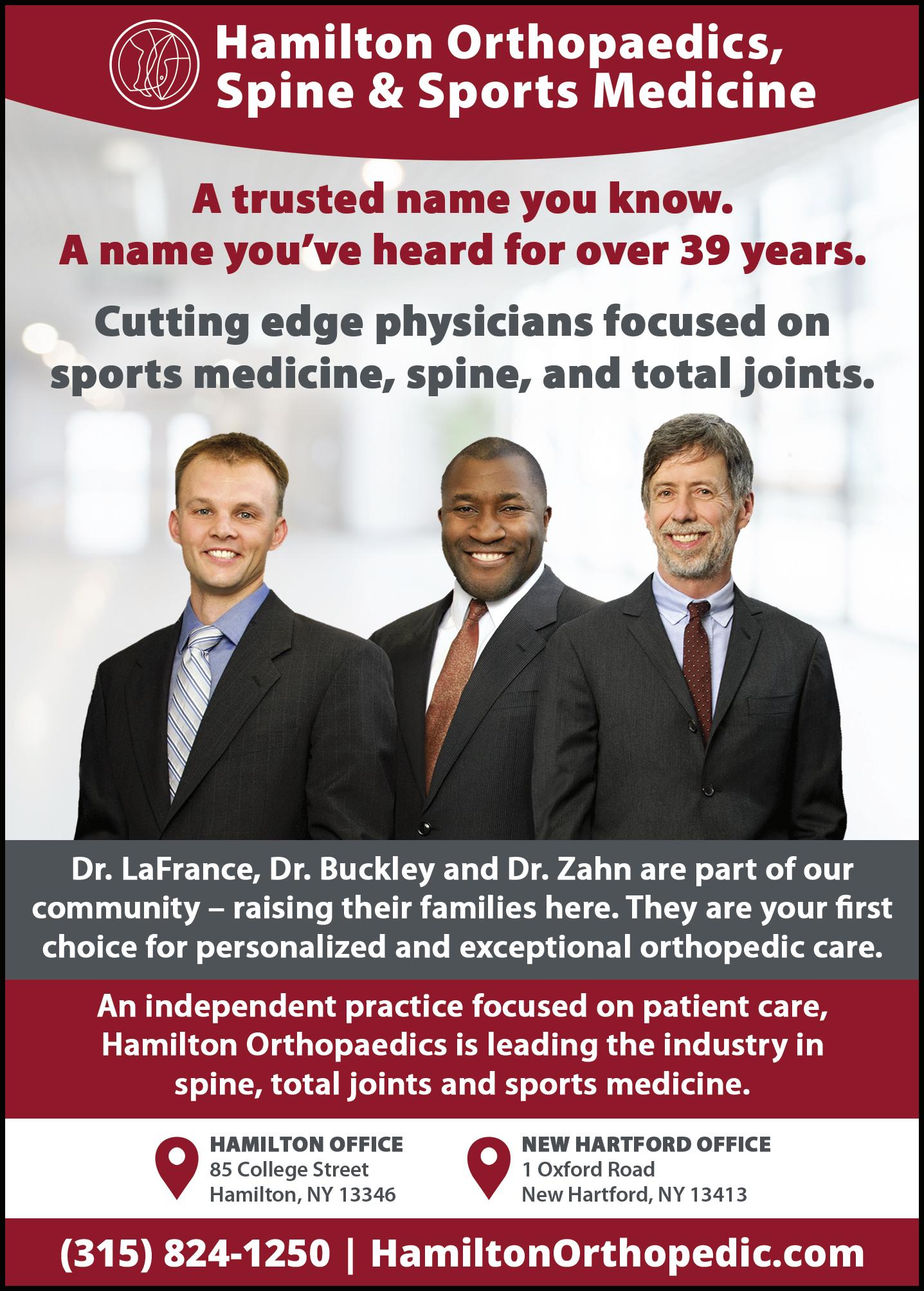
“I think that smoking will contin-
ue to ebb downwards, but whether the prevalence of nicotine addiction will drop, given the rise of electronic products, is not clear,” Jonathan Samet, dean of the Colorado School of Public Health in Aurora, told the AP.
On average, crashes claimed the lives of 117 people a day — more than 42,000 in all for 2022
Traffic deaths are down on U.S. roadways, but the small drop pales in comparison to the surging rate of recent years.
Deaths in traffic crashes fell 0.3% last year compared to 2021, according to the U.S. National Highway Traffic Safety Administration (NHTSA).
On average, crashes claimed the lives of 117 people a day — more than 42,000 in all for 2022.
“Any reduction in roadway deaths is positive, but the minor decrease announced by NHTSA follows an unprecedented pandemic-fueled surge in roadway fatalities and dangerous driving,” said Jonathan Adkins, chief executive officer of the Governors Highway Safety Association (GHSA). He spoke in a news release from the governors' group responding to the NHTSA announcement.
The GHSA noted that traffic deaths surged 30% over the past decade. Between 2019 and 2022, they rose from 36,355 to 42,795, an increase of nearly 18%.

Dangerous driving behaviors, including speeding, impaired driving and not wearing a seat belt all increased between 2020 and 2021.
Pedestrian deaths reached a 40-year high of nearly 7,500 in 2021, according to a GHSA analysis. Early indications are that 2022 was also a deadly year for people walking, the group said.
“These roadway deaths are heartbreaking, unacceptable and preventable," Adkins said. "We will not accept such incremental safety progress after two years of escalating deaths and more dangerous driving on U.S. roads.”

Adkins pointed an approach outlined in the U.S. Department of Transportation's National Roadway Safety Strategy.
It calls for a number of measures, such as equitable traffic enforcement; infrastructure that slows down drivers and protects pedestrians, bicyclists and other non motorized road users; and community engagement campaigns developed with local input. It also recommends vehicle technology that protects people both inside and outside the vehicle and investments in post-crash care.



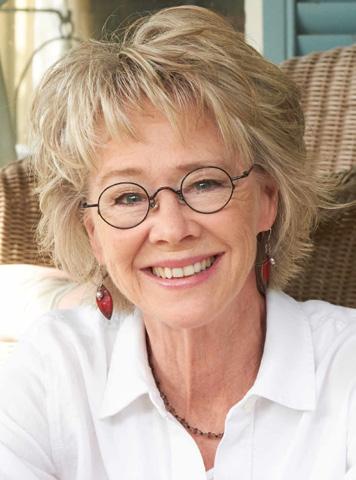
Have you fallen off the social circuit?
There’s no time like spring to hop back on!
The fear of walking into an event by yourself or the discomfort of being “third wheel” can keep lots of single women and men home on the weekend.
Don’t I know it!
Though it was years ago, I still remember the dismal details that followed an invitation to a relative’s wedding. It wasn’t long after my divorce and I surprised myself by actually giving it consideration. What was I thinking?! A wedding? Alone?
But I like marriage ceremonies and I wanted to reconnect with some friends and relatives I hadn’t seen in some time. Plus, it was a reason to dress up and get out of the house.
So on that fateful day, I pulled up to the church, parked and sat in my car. There I waited. And watched. And waited some more. Then withered.
I watched one happy couple after the other walking in, holding hands, laughing and looking oh so in love. I could feel my blood pressure rising and my courage crumbling.
I started to think, “What am I doing here?” And then a surge of “poor me” self-talk showed up and robbed me of my resolve. I sat there in my pretty dress and pumps, unable to muster the confidence to enter the
church alone.
I turned on the ignition and returned home to my empty apartment.
Disappointed in myself, I vowed not to let something like that happen again. I wasn’t going to miss out on life’s experiences just because I was single. In that moment, I made a promise to myself: I wouldn’t let my fears and insecurities keep me confined at home and within a safe circle of women friends.
Learning to do things solo and to actually enjoy myself, took time, practice and, frankly, some guts. Over time, I became increasingly comfortable socializing in a couples’ world.
Here’s how:
Part of what kept me from going out to eat or to a movie by myself was my concern about what people would think of me — or, more accurately, what I thought they would think of me. Did I have no friends? Was I undesirable company? Or worse, was I on the prowl?
Overcoming self-conscious thinking was essential to moving forward and out of my house.

What do you think when you see someone walking into an event alone or sitting by themselves at Starbucks
reading the paper? Do you assign negative attributes to them? Probably not. You likely don’t give it a second thought. Or maybe you secretly admire their confidence and ability to enjoy their own good company.
Keep this in mind the next time your fears and doubts keep you from venturing out alone.
Expand your social circle
If you’ve fallen off the social circuit, it’s your responsibility to find a way back on. You need to make the first move, and one of the best ways to get back onto invitation lists is to embrace the theory of reciprocity: You invite people into your world, and they, in turn, will invite you into theirs.
No need to go overboard; inviting a few friends over for coffee or a cookout will get the ball rolling. Your social network will begin to grow and before you know it, you’ll find yourself enjoying the company of good friends, both old and new.
Be prepared to bump into your ex
If concerns about running into an ex-spouse or significant other at a social event keeps you from accepting invitations, be prepared.
Before you go, anticipate and visualize running into your ex. See yourself handling the encounter with grace and, most importantly, brevity. A few pleasantries and a polite “take care” will help you move past the encounter in a relatively quick and painless manner.
Bumping into an ex may be inevitable depending on your situation, so gear up, grin and bear it, and get going on your way.
Even after all these years of living alone and attending social engagements on my own, I still don’t relish the thought of walking into an event by myself. In fact, to make it more palatable, I developed a fivestep formula to ease my way in — and it has never failed me.
Here is my game plan:
1. Pull up to the event and gather my thoughts in the car.
2. Repeat my mantra: “All I need is within me now.”
3. Take a few deep breaths.
4. Remind myself to be myself and to be curious about others.
5. Enter the event and make a beeline for the host to say hello and introduce myself to others standing nearby.
After connecting with the host and a few guests, I can more easily enter into universally accepted smalltalk subjects: books, travel, food, movies and sports (or more precisely, pickleball).
Feeling good about living alone often means confronting social, as well as emotional, challenges. Getting comfortable in a couples’ world is among them. But once mastered, it gets easier and easier. Even fun!
Gwenn Voelckers is the founder and facilitator of Alone and Content, empowerment workshops for women and author of “Alone and Content,” a collection of inspiring essays for those who live alone. For information about her workshops, to purchase her book, or invite her to speak, visit www. aloneandcontent.com
Heather Rodriguez, volunteer on the marketing and communications committee at GiGi’s Playhouse in Cicero, views the introduction of the new Barbie as a “huge step forward for Mattel. Inclusion matters. Representation matters, as kids play with toys and create games in a pretend atmosphere. In the stories we tell through play, we want to see ourselves, whether a person of color or with a disability.”
t age 35, Kayla
McKeon has an impressive resume. A 2022 graduate of Onondaga Community College in Syracuse, she meets regularly with Congress as the manager of grassroots advocacy for the New York City-based National Down Syndrome Society (NDSS) to discuss issues involving Down syndrome and the disabled community.
She also helped design Mattel’s first and only Barbie doll with Down syndrome. It is part of the toymaker’s Fashionista line.
For McKeon, helping design the doll means more than a career highlight. As a person with Down syndrome, the doll means representation in the toy
“When I was a little girl, I had dolls who didn’t look like me,” McKeon said. “It’s an honor to help make a doll who looks like me with some of the same characteristics
She suggested that the doll design should include a crease in its palm, a trait often seen in people with Down syndrome and clinodactyly, a curved, short pinkie finger that often occurs as genetic syndromes including Down.
Some of the doll’s other traits indicate Down syndrome, including a flat nasal ridge, small ears, almond-shaped eyes with a tilt, a rounder face, a shorter frame and a
The doll comes with pink ankle foot orthotics and her sneakers include a zipper. These resemble the orthotics used by some children with Down syndrome. The doll’s dress is printed with a symbol of Down syndrome, yellow and blue butterflies and its necklace bears three upward chevrons that symbolize the three chromosomes of Down syndrome, “a symbol of those lucky enough to be connected with Down

syndrome,” McKeon said.
The idea for a Down syndrome doll began about a year ago as the NDSS began discussing a partnership with Mattel to make the doll.
McKeon wants better representation so that the general public realiz es that people with Down syndrome are more like others than unlike them.
“In school, I was included with my peers,” she said. “I want it to be like that everywhere. I live on my own in my own apartment. I have my driver’s license. I have a long-distance relationship.”
McKeon has been interviewed by numer ous media outlets and starred in Mattel’s video promotion of the new doll.
She hopes to “work herself out of a job” someday when people with disabilities are treated as equals, but in the meantime, she hopes to continue to advance her career with NDSS and per haps help design a new doll.
McKeon is also considering going back to school to build on her associ ate degree in general studies. However, her work is keeping her plenty busy presently.
Nancy Carr, director of the office of accessibility resources at Ononda ga Community College, noted that McKeon was the first advocate for the NDSS who has Down syndrome.
“It bodes well for Kayla’s future,” Carr said. “Her personality has always been open, exploring, excited and confident. I think she had what everyone should have: a great support team, but she also has her own, innate outgoing personality.
“I like all the publicity the doll is getting; it’s long overdue. I like positivity and creativity and hope it opens the eyes of corporate America in that they’ve overlooked a sizeable population that should be represented. Kayla is wonderful to work with and I wouldn’t be surprised if other offers came her way.”
She thinks that the new Barbie can also help children who don’t have Down syndrome to better understand their peers and adults who do by asking about how the doll is different and how it’s the same. Rodriguez wants more people to talk about Down syndrome.
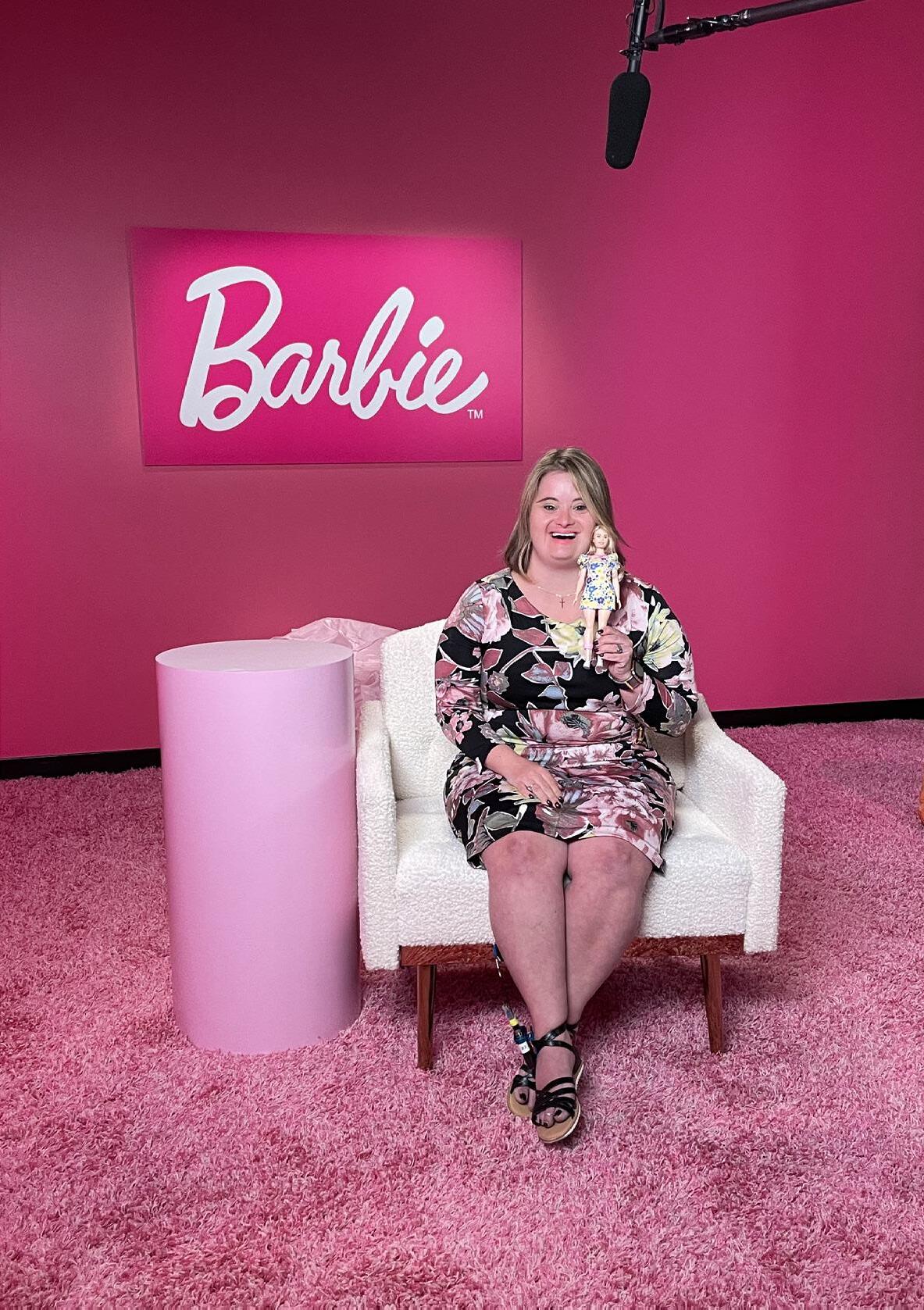
“Questions should never be discouraged,” she said. “I grew up in the ‘70s and early ‘80s and back then, our parents weren’t equipped to answer them. It was ‘Don’t stare; be thankful for what you have’ and as a child, I didn’t understand that. If there were dolls and toys who are different, what an easy way to introduce that.”
Mattel’s 2023 Fall Fashionistas dolls, including the Barbie doll with Down syndrome, are available online and in stores for $10.99.
LEFT: Mattel’s newest Barbie Fashionistas doll is modeled after individuals with Down syndrome. Some of the doll’s traits include a flat nasal ridge, small ears, almondshaped eyes with a tilt, a rounder face, a shorter frame and a longer torso. The doll comes with pink ankle foot orthotics and her sneakers include a zipper.
RIGHT: Kayla McKeon poses in the studio with the new Barbie doll with Down syndrome. “When I was a little girl, I had dolls who didn’t look like me,” she says.
It’s not too later to arrange the medical and dental visits your kids will need over the summer break from school. With planning, you’ll be able to easily fit the wellchild visits, physicals, and dental exams into your summer schedule.
“Don’t wait too long to make your child’s summertime medical and dental appointments because your doctor may not have openings when you want them,” says Mark Brown, a family medicine physician
and medical director at Excellus BlueCross BlueShield. “Appointments can get scarce as we get into the summer, so secure pediatric medical and dental visits now.”
Children aged 2 to 21 years old should have an annual physical to make sure immunizations are up to date; growth and development are on track; hearing and vision are optimal for learning; and important topics are addressed such as eating and sleeping habits, social behaviors, and
A"peanut patch" worn on the skin may help protect toddlers who have potentially life-threatening peanut allergies, a new clinical trial shows.
The patch is a form of immunotherapy, which means it exposes peanut-allergic children to tiny bits of peanut protein over time — with the goal of training the immune system to better tolerate it.
In the trial, researchers found that of toddlers who wore the peanut patch every day for a year, two-thirds showed a significant reduction in their sensitivity to peanut protein: They were able to eat the equivalent of one to four peanuts without suffering an allergic reaction.
While that might sound like peanuts, experts said that level of tolerance is important.
The goal of immunotherapy is to prevent a severe reaction should a child accidentally ingest a small amount of peanut, said physici-
anAlkis Togias, of the U.S. National Institute of Allergy and Infectious Diseases.
"This is a positive study," said Togias, who wrote an editorial published with the findings on May 10 in the New England Journal of Medicine.
The patch tested in the trial, called Viaskin, is being developed by French biotech company DVB Technologies, which funded the research. It is not yet approved by the U.S. Food and Drug Administration.
If it does win approval, Togias said, "I think that would only be a good thing."
An estimated 2% of U.S. children are allergic to peanuts, and for most the allergy continues into adulthood. That makes it the most common food allergy among kids, and the thirdmost common among adults, according to the nonprofit Food Allergy Research and Education (FARE).

family dynamics.
For children with asthma, an annual physical provides an opportunity to review and update the child’s asthma action plan, and to make sure all adults who care for the child have a copy, including camp counselors, coaches, teachers, caregivers, and
even parents of their friends.
“Routine checkups not only offer preventive care, but also create strong, trusting relationships with providers that will benefit your child throughout their life,” says Brown.
Regular dental care is just as important as well-child visits and is recommended every six months.
“Preventive dental care is essential for good oral health, and also for general health,” says Brown. “Untreated oral disease has a large impact on quality of life and productivity, including for children.” Each year, U.S. children lose an average of 34 million school hours because of emergency dental care.

Brown advises parents to make the most of their children’s medical and dental visits by making a list of topics they’d like to address with their child’s health care provider. “Bring your top three to five questions or concerns with you to discuss at the start of the visit.”
School may not let out for the summer for several more weeks, but that doesn’t mean it is too early to start planning the most efficient way to use the break. Make your wellchild and pediatric dental appointments now.
The synthetic opioid fentanyl is killing increasing numbers of U.S. kids, emulating the chilling trends seen among adults, a new study finds.
Pediatric deaths from fentanyl increased more than 30-fold between 2013 and 2021, according to study author Julie Gaither, an assistant professor of pediatrics at the Yale School of Medicine.
Nearly half of the deaths occurred at home, and most were deemed unintentional. Teens may not have known the drugs they were using were contaminated with fentanyl, while very young children may have touched or swallowed drugs used by their parents.
"The problem is that more adults are exposed to fentanyl now, whether it's a pure form of the drug or it's being cut into other drugs, so kids are more likely to be exposed to it," Gaither explained.
Using death certifi cate data from the U.S. Centers for Disease Control and Pre vention, Gaither assessed deaths from fentanyl over two decades.
Almost 5,200 deaths among near ly 14,000 fatal opioid poisonings between 1999 and 2021 were due to fentan yl, Gaither found.
In 1999, about 5% of the deaths from opioids were from fentanyl; by 2021, that had jumped to 94%, mirroring the pat tern of adult fatalities.

Earlier in May, a CDC report
disclosed that fentanyl overdose deaths in the United States had soared 279% in just five years.
In Gaither's research, she found that a surge in fentanyl-related fatalities that began in 2018 led to a nearly threefold increase in deaths among older teens and a nearly sixfold increase among children younger than 5.
Deaths peaked in 2020 and 2021, Gaither said, suggesting the COVID-19 pandemic made the fentanyl crisis worse.
Nine in 10 of these deaths were among teens aged 15 to 19, and nearly 7% were among kids under 4.
In 2021 alone, fentanyl caused 40 infant deaths and 93 deaths among kids aged 1 to 4, according to Gaither's report.
"There is a general consensus that the overdose deaths involving fentanyl among kids, whether young kids or teens, are primarily unintentional," said Linda Richter, senior vice president at the Partnership to End
"Among younger children, access to pills or substances laced with fentanyl that are left within their reach is the main culprit," said Richter, who was not part of the new research.
"For older adolescents, the culprit is more likely a lack of awareness that the pill they are intentionally taking contains
As any parent knows, your idea of a good time and your kid’s idea of a good time match like the pile of socks at the bottom of the laundry basket.
So, if you’re a parent who seeks entertainment ideas that will make at least 67% of your family happy, look no further. This list of activities that might just beat the odds and get a smile out of almost everyone in your family.
Most of these activities can be also customized for children of any age. So give them a shot. You only have boredom and bickering to lose.
There is something magical about staring into the night sky. When the time is right to stargaze, do some research about what constellations are visible. Then see if anyone in the family can connect the orbs in the sky to make a picture. You can also research the story of each constellation.

Take your kids on the putt-putt tour this season. Map out a few different places to play mini golf. Then create friendly competitions. See who has the most holes-in-one at the end of the tour. See who had the lowest combined score. See who won the most individual matches. See who landed in the water hazards the most. Make it silly.
Camping is a lot of fun, but it’s also a lot of work to travel far away from home. If there are campsites close to your home, rent one for a night or two. Then you don’t have to travel far to enjoy the outdoors. You


Although the summer weather feels good, too much heat and sun can cause health problems.
Sun exposure—not temperature—can cause skin cancer. However, most exposure happens during the warmer months of the year. The American Academy of Dermatology Association named skin cancer as the most common kind of cancer nationwide, with 20% of the population receiving a diagnosis at some point, totaling 9,500 new diagnoses daily. The five-year survival rate is 99% if caught early; however, once it spreads to nearby lymph nodes, that drops to 68% and if it spreads to more distance lymph nodes, it plummets to 30%.
Limiting sun exposure can significantly decrease the risk of skin cancer.
“Wear protective clothing, including a hat and sunglasses, and use sunscreen with an SPF of 30 or higher,” said Melanie Drotar, director of public health communications at Onondaga County Health Depart-
ment. “Seek shade during the hottest part of the day, between 10 a.m. and 4 p.m.”
Women who wear makeup should apply sunscreen first or ask a dermatologist about two-in-one products like a tinted moisturizer with SPF or foundation containing SPF. Water resistant products are recommended during exercise or swimming.
According to the EPA, “nearly half of UV radiation is received between 10 a.m. and 4 p.m., when the sun’s rays are the strongest.” But keep in mind that even on a cloudy day; it’s possible to be sunburned.”
If the body becomes too hot, untreated heatstroke can damage the brain, heart, kidneys and muscles. Pregnant women can experience preterm delivery.
“Never leave children or pets in a parked car, even for a few minutes,” Drotar said. “Extreme heat can be dangerous, especially for older adults and children. Stay cool by staying indoors in air-conditioned buildings or using a fan, wearing lightweight and

also have a short trip home if it rains. And, if you forget something, your house is guaranteed to have more supplies than the park’s camp store.
4.Go to a park and tell your kids they’re teachers
Upstate New York is home to many state, county and private parks. Many of these parks have informational signs throughout them. Take your kids to one of these parks and have your kids teach you the information on the signs. Even if your child can’t read yet, they can use the pictures to design a story. The role reversal will make it fun.
5.Take turns setting a family barbecue menu
Let each member of your family plan a barbecue. They have to set the menu and help prepare the meal. They can pick their favorite barbecue foods. Sure, one of your barbecues might be just cheese puffs, baked beans, and buttered rolls, but everyone will enjoy the autonomy.
Add some extra adventure to an everyday hike by going somewhere that is new to everyone in the family. Then you can work together to analyze the trail map and plan out the hike. A new hike will encourage collaboration. Just don’t get lost.
A movie night may sound cliched, but if you spruce it up, you just might get instant buy-in. Plan out a series of movie nights. Each night, each member of your family gets a different responsibility. One person can pick the genre. Another person can pick the movie. Another one can pick a candy. Another one can pick
a salty snack. Shake things up and settle in.
8.Find the best ice cream parlor within 20 miles of your house

Research all the ice cream places that you can reasonably get to over the next few months. Keep a record of which places had things like the best ice cream, the best toppings, the biggest sizes, the funniest sundae name or the softest napkins. The whole family will enjoy being a judge in this delicious competition.
9.Chalk for a better world
Make it your mission to find new and creative places to leave chalk art. You could chalk the end of a neighbor’s driveway with a beautiful picture or kind message. You could go to a public park and leave words of encouragement for strangers. You could go to a family member’s house and draw them a mural to brighten their world for days to come. Chalk is an easy way to spread joy.
10. Have a “say yes” day Set a monetary budget and some gentle boundaries and let the family embark on a “say yes” day. What is a “say yes” day? It’s as easy as it sounds; someone volunteers an idea and you have to say yes. Remind your kids to be reasonable, and then let them live out their simple and realistic dreams. Ice cream for breakfast? Yes. Family video game tournament? Yes. Swimming in a lake? Yes. Three playgrounds in one day? Yes. Let your imagination run you right into happiness.

try adding cucumber slices, fruit or herbs like basil, mint, dill or tarragon.
Whether it’s gardening or going for a run, avoid outdoor activity during the hottest parts of the day.
“Work out in the early morning or in the evening, when the sun starts going down and it’s a little cooler,” advised Paula Pacini, group exercise coordinator at the JCC Syracuse.
Heat exhaustion leads to heatstroke if untreated. Heat exhaustion manifests with higher body temperature, cool, sweaty and clammy skin, thirst, head and body aches, slow pulse, and feeling faint. By the time a person reaches the stage of heatstroke, the body is not sweating as much, exhibits hot, flushed skin and the person feels nauseated, confused or possibly unconscious.
loose-fitting clothing, and drinking plenty of water.”
Hydration can help prevent heat exhaustion and heatstroke, but caffeinated beverages can cause more fluid loss because they’re diuretics. Most healthy people need to drink half their weight in ounces each day, so a 130-piund person would need about 65 ounces of fluids daily. That’s a little more than eight glasses of eight ounces each. Juice, tea and other beverages count towards that total, but water should be the go-to beverage choice, as it’s free of calories. To keep it more flavorful and appealing,
Summertime weather typically means warm, sunny skies. However, it’s also thunderstorm, tornado and flood season. But heat in the atmosphere mixing with cooler air can generate serious storms. After weeks of little rain, a heavy rainstorm can cause flooding in some areas.
The website www.ready.gov offers resources for preparing, such as building a family kit for power outages, developing a family plan for weather emergencies and tips for dealing with flooding.
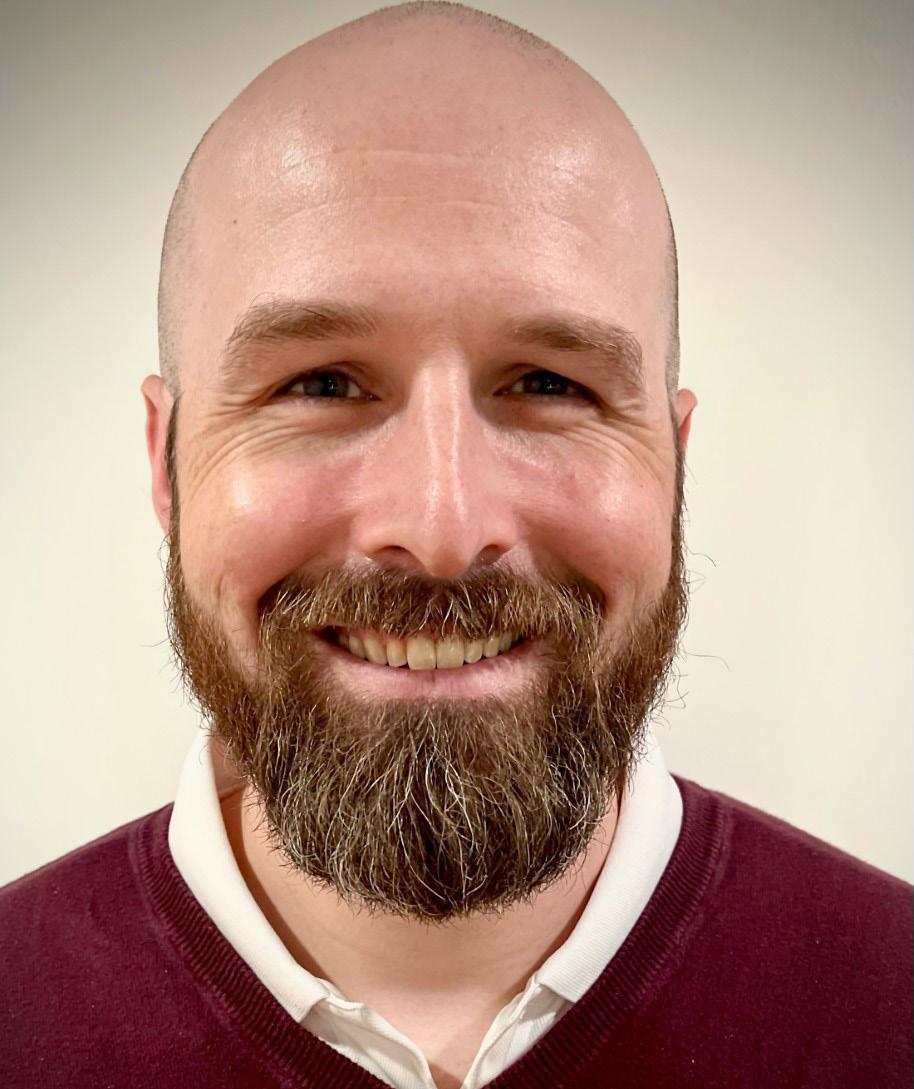
Q: Is this new initiative a respite program or a center?
A: We refer to it in a couple of different ways. We currently operate two six-bed crisis respite programs. All of the crisis programs that we operate currently and will operate in the future will sort of be considered a part of a crisis respite center. It started actually before my current time at Elmcrest. My history with the agency is that I worked here from 2013 to 2015 in a long-term residential program, worked elsewhere, and came back last July specifically to do this. But my understanding is that this conversation was in the talks for months and perhaps years before I returned in the summer of 2022.
In terms of opening our doors, that was on March 28 of 2023, but
we began program development and construction probably last summer.
Q: What prompted the creation of the center?
A: We were seeing this real gap in care and level of care between what could be provided with families in their home and in community-based settings and what would prompt an admission to one of our local hospitals. There’s a really wide gap. Anecdotally, as a supervising therapist over the last few years, I had been consulted with on a number of occasions about a child who was in a crisis and my recommendation would have to be to the therapist that they should direct the family to the hospital, but that the child would, in all likelihood, not be admitted to
More American children have autism than previously thought, the U.S. Centers for Disease Control and Prevention reports.
Data from 11 communities in the Autism and Developmental Disabilities Monitoring Network, which tracks the number and characteristics of children with autism and other developmental disabilities, revealed that at age 8, about one in 36 children has been identified with autism spectrum disorder (ASD).
That's 2.8% of 8-year-olds, according to an analysis published in March in the CDC's Morbidity and Mortality Weekly Report.
A previous estimate, done in 2018, pegged prevalence at one in 44 children, or 2.3%.
A second report found that progress in early detection of autism among 4-year-olds in the same 11 communities slowed during the early months of the COVID-19 pandemic. They were less likely to be screened or identified with ASD than
the hospital because only the most severe situations and circumstances prompt hospital admission. That is the level of strain that is on the local emergency departments, particularly those that serve psychiatric needs in youth.
Q: Can you briefly explain how this center operates?
A: We operate with a short-term focus on meeting the mental health needs of young people aged 5 to 18. They can come and stay with us for up to 21 days and during the length of their stay, they are provided with an array of mental health services on site with our therapist, with our contract psychiatrists, with the rest of our paraprofessional team that oversees their safety and mental health treatment while they’re here. And we try to maintain as much connection to the home community as we can. We bring kids to their regular school. We ensure that if they have an existing therapist or doctor’s appointment that we get them to those appointments as well. They do not have to stop seeing any of their existing providers when they come to stay with us. We actually really want those relationships to continue. We also transport kids to extracurricular and recreation activities that they already have set up in the community. It’s a really important part of their treatment and not disrupting any more of their life than is absolutely necessary. If a teenager has a job, we can bring them to and from work. They’re essentially living here. They’re getting their meals here, they’re sleeping here, they’re having recreation and homework time here. They’re basically living at Elmcrest for 21 days at a time.
Q: How many youth can you serve at a time?
A: We have 12 beds currently, but we are hoping to expand because we are already seeing that the need in the community far exceeds what we can provide. We’re seeing that we need more, and we’re already hard at work preparing for that next stage for our crisis respite center development.
Q: What kind of crisis or crises might bring a child to the center?
A: It’s really a wide range. Just about any kind of mental health-related crisis or mental health area that you can think of — anxiety, depression, panic attacks, aggression, selfharm, eating disorders, trauma or even something that would not have a diagnosis to it, but a challenging life experience that’s happening. Per-
haps the child has moved to the area recently and they’re really struggling with the adjustment. Or perhaps the parents have just shared that they’re going to be separating and the child is really having a hard time with that life change. We can also be helpful in those types of situations, too.
Q: How do you — or will you — measure the success of your programs?
A: We have a range of clinical tools that we use. We administer those three, six, nine and 12 months after somebody has completed their stay with us. Now, because of the recentness of our opening date compared to our interview date, we don’t have any of those completed yet, but we are also going to be using patient satisfaction surveys, as well, to try to get the impressions of the youth and the family who we’ve served. One of the most important markers for success is ‘Did that young person need to utilize the area hospitals in the immediate aftermath of their stay at the crisis respite?’ Our hope is to disrupt the cycle of hospitalization that can occur for young people experiencing a psychological crisis.
Q: How does the referral process work?
A: All of the information can be found on elmcrest.org. But there’re two avenues to being referred. Anyone can complete the referral process. It can be a therapist or a doctor, a teacher, a coach, the parent.
Q: You referred to your plans for future expansion? Do you have anything concrete or is it still in the talking stages?
A: I’ve got a couple of different ideas for expansion of you know this is all planning stage. A lot can change, but I know we’re hoping to expand the number of beds that are on Elmcrest’s campus in Syracuse for crisis respite programming. We’re also recognizing already that there’s a need in some different geographic areas. We’ve already had youth come and stay with us from Oswego County, Cortland County, Oneida County. Those seem like logical next steps as far as other locations where a program like this might be needed.
Q: Is there anything you’d like to add?
A: The only thing that I would add is that it is paid for through the young person’s health insurance coverage, whether that be Medicaid or private insurance. In that way, we have an open door to just about anybody, but we do encourage the adults to check in with the insurance provider about what out-of-pocket costs might be before the stay begins.
current 8-year-olds were at the same age.
“Disruptions due to the pandemic in the timely evaluation of children and delays in connecting children to the services and support they need could have long-lasting effects,” said physician Karen Remley, director of CDC's National Center on Birth Defects and Developmental Disabilities.
“The data in this report can help communities better understand how the pandemic impacted early identification of autism in young children and anticipate future needs as these children get older," Remley said in an agency news release.
Who was diagnosed with ASD also changed, the report revealed.
Prevalence of autism in Asian,
Black and Hispanic children was at least 30% higher in 2020 than 2018. Among white children, ASD prevalence rose 14.6% over the period.
This was the first time that the percentage of 8-year-old Asian or Pacific Islander, Hispanic or Black children identified with autism was higher than in white children. For white children it was 2.4%, compared to 3.3% for Asian and Pacific Islander children; 3.2% for Hispanic children, and 2.9% for Black children.
Public health experts noted that the shifts may reflect improved screening, awareness and access to services among historically underserved groups.
 By Eva Briggs, MD
By Eva Briggs, MD
We don’t know exactly why AMD occurs but there are some known risk factors: family history, Caucasian race and smoking
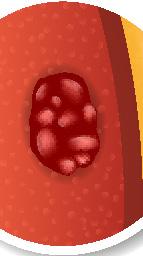

My mother-in-law recently asked me about macular degeneration. So I thought I’d look up something about this condition.


First of all, what is the macula?


And what does it do?
The back of the eye, called the retina, is a layer of specialized nerve cells that convert light into electrical signal. Nerves transmit these signals to the brain for interpretation, enabling us to see. At the center of the retina is a round section called the macula, whose job is to interpret the fine details of objects in front of you. This allows you to decipher text, distinguish different faces, detect tiny movements and differentiate specific colors. When the macula is damaged or diseased, the eye can still detect light, but vision becomes blurry and lacking in detail.
Age-related macular degeneration (AMD) is an eye disease that damages the macula. It’s common
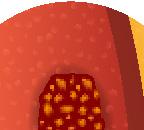




and an important cause of vision loss for older adults. We don’t know exactly why AMD occurs but there are some known risk factors: family history, Caucasian race and smoking. AMD comes in two types, dry and wet. Dry AMD, also called atrophic AMD, occurs when the macula thins with age. Wet AMD, also called neovascular AMD, is less common but often causes faster vision loss. This occurs when abnormal blood vessels grow in the back of the eye and damage the macula.
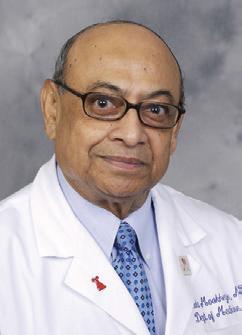

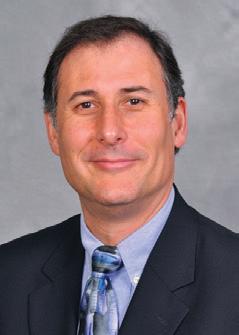
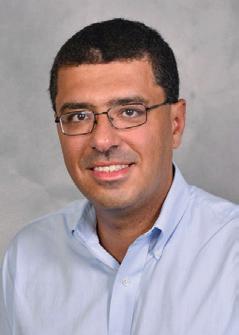



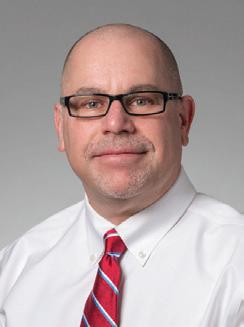
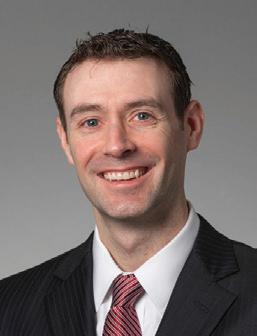

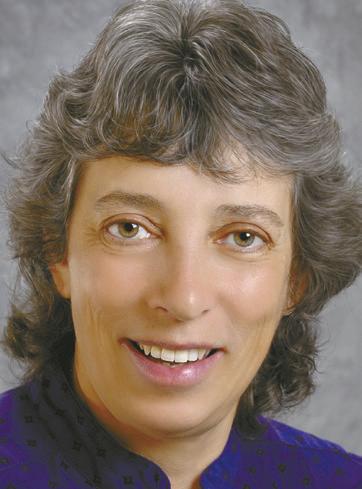
Dry AMD evolves in three stages: early, intermediate and late. In early dry AMD there are no symptoms. Intermediate dry AMD may remain asymptomatic or cause mild symptoms such as blurriness in the central vision or difficulty seeing when the light is low. In late AMD (both wet and dry), straight lines begin to look crooked or wavy. There may be an area of central blurriness which gradually enlarges or even blank spots.
Eye doctors can detect AMD during an eye exam that involves dilating the pupil. That’s one of many reasons for regular eye exams.
There is currently no treatment for early AMD. But there is a special vitamin supplement (AREDS-2) that may slow the progression of intermediate AMD. For wet AMD, treatment might include medication injection into the eye, or photodynamic therapy which consists of injections plus laser treatment.





Some people develop AMD in only one eye. There isn’t any cure for AMD. The low vision of late AMD isn’t fixed by glasses, contacts or surgery.

The good news is that there are various low vision devices and vision rehab services to help people with AMD remain active and indepen-
dent. An organization called IALVS — International Academy of Low Vision Specialists — has an online directory of low vision specialists. One of my friends who is blind told me that her low vision specialist was the most helpful medical provider when she lost her vision due to a combination of diseases.

You can enjoy better health by making a few changes this summer.

1.Drink enough fluids. “Adequate hydration is important during the summer as your body naturally cools itself through sweating,” said Jane Burrell, registered nurse and associate teaching professor at SU. “To ensure you are getting enough fluids to stay adequately hydrated, be sure to drink water whenever you are thirsty and anticipate the increased need on warm and humid days. Many foods contain additional water within them, which contributes about 20% of your fluid needs. Adding more fruits and vegetables is a great way to increase your fluid intake as well as provide key vitamins and minerals that support the increased metabolism needed to cool your body.”
2.Load up on produce. Picnics, festivals and parties are easy places to find processed foods, like hot dogs, fried foods and fatty meat. But filling up on fruit salad and veggie trays is a better way to eat. “Fruits and vegetables are an excellent source of antioxidants,” Burrell said. “Any fresh fruits and vegetables provided benefits, but it is helpful to have a variety and strive to get the different colors of the rainbow regularly. Brightly colored fruits and vegetables tend to be higher in nutrients like vitamin C and potassium.”

3.Reduce sugar intake. As refreshing as cold soda and ice cream treats can feel on a hot day, Paula Pacini, group exercise coordinator at JCC Syracuse, warns to “avoid high sugar drinks and make wise choices, either smaller portions of ice cream or a low-fat dairy treat.” Sparkling water such as La Croix


and Bubly are infused with light fruit flavors, but contain no artificial sweeteners, sugar or calories.
4.Make workouts fun. You don’t have to sweat it out in the gym to have a good workout. “It’s great to go out for a walk or play pickleball, softball, to tennis,” Pacini said. “Engage in activities with friends. There’s benefit in working out, but with friends, it doesn’t feel like working out. You can have some quality time doing something together.”

5.Stay safe from tick-borne illnesses. “It’s important to protect yourself from mosquito and tick bites to prevent the spread of diseases like West Nile virus, eastern equine encephalitis (EEE), and Lyme disease,” said Melanie Drotar, director of public health communications at Onondaga County Health Department. “When spending time outside, wear light-colored long-sleeved shirts and pants when possible and use an appropriate insect repellent. Fix holes in screens and get rid of standing water on your property where mosquitoes breed.”
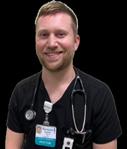
6.Guard against rabies. This fatal disease can be prevented. Drotar said it’s important to keep pets’ vaccinations up to date. Even indoor cats can become ill from a mouse or bat carrying the disease. Bat- and mouse-proofing can reduce the risk. Most communities offer lowcost vaccination clinics periodically. Reduce the risk of attracting wildlife by “keeping garbage cans tightly closed to prevent wild animals from accessing them,” Drotar said. “Never approach or pet a wild or unfamiliar animal. Keep your distance from stray cats and dogs. Call your town or local municipality for guidance on
how to remove stray or wild animals from your neighborhood. Treat and report animal bites.”
7.Protect yourself from the sun. “The sun can damage your skin and increase your risk of skin cancer,” Drotar said. “Wear protective clothing, including a hat and sunglasses, and use sunscreen with an SPF of 30 or higher. Seek shade during the hottest part of the day, between 10 a.m. and 4 p.m.” Reapply sunscreen every two hours, after excessive sweating and after swimming and towel drying.
8.Prevent lead poisoning. Since children tend to spend more time outdoors exploring, people who own older homes should be aware of the dangers of chipped or peeling lead paint. “The soil closest to your home may be contaminated with lead paint,” Drotar said. “Keep children away from bare soil, always wear gloves and wash your hands after gardening and take your shoes off at the door to avoid tracking soil into your home. During home repairs or renovations, keep all children, pregnant women and pets away from the work area. Use lead-safe certified contractors to ensure lead-safe work practices are followed.”
The Onondaga County Health Department Lead Poisoning Preven-



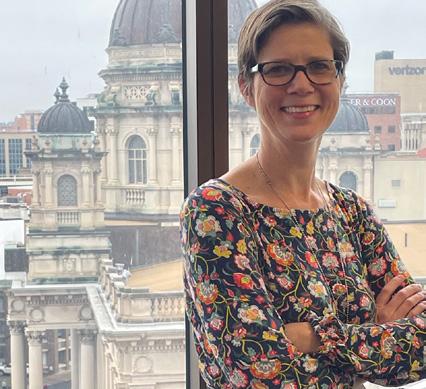

tion Program may be reached at 315435-3271 to check for eligibility for a free home lead inspection.
9.Prevent food poisoning. Who doesn’t love a delicious picnic or barbecue? Cooking and eating outdoors can increase the risk of food poisoning because of inadequate sanitation, cross contamination, lack of refrigeration and insufficient cooking temperature. “Wash your hands before and after handling food, keep raw meat separate from other foods and cook meat to the proper temperature,” Drotar said. The website www.foodsafety.gov offers helpful tips.
10. Be safe in the water. It’s easy to think that you don’t need a life jacket while riding in a boat as an adult. Or that your children can go swimming where there’s no lifeguard around. But skimping on safety can bring tragic outcomes. “Water safety is important for everyone, especially children,” Drotar said. “Make sure you and your family knows how to swim, and always supervise children around water. Be aware of the risks of recreational water illnesses.” Instruct children not to drink water in which they’re swimming and heed any posted signs at bodies of water.

My husband and I now get most of our protein from plant-based foods: legumes, quinoa, chia seeds, tofu and dairy products.
While we are long past any growth spurts, we still need protein to preserve muscle mass, maintain balance, manage weight and recover from injuries.
Compared to getting protein from meat, however, it’s not always easy to get our daily allotment of protein from plants.
But a food product we recently discovered has facilitated that effort: plant-based pasta.
Most plant-based pastas have considerably more protein than your average refined-wheat pasta. Plus, their pronounced flavor satisfies us more than regular pasta.
Read on for more good reasons to eat plant-based pasta. And why “more protein” is just the tip of this nutrition-packed iceberg.
• Loaded with fiber. Most plantbased pastas have over twice the fiber of regular pasta. Fiber is a boon to health because it stabilizes blood sugar levels, promotes regularity and ferries bad cholesterol out. Many studies suggest that increasing fiber reduces our susceptibility to heart disease, cancer, stroke and diabetes.
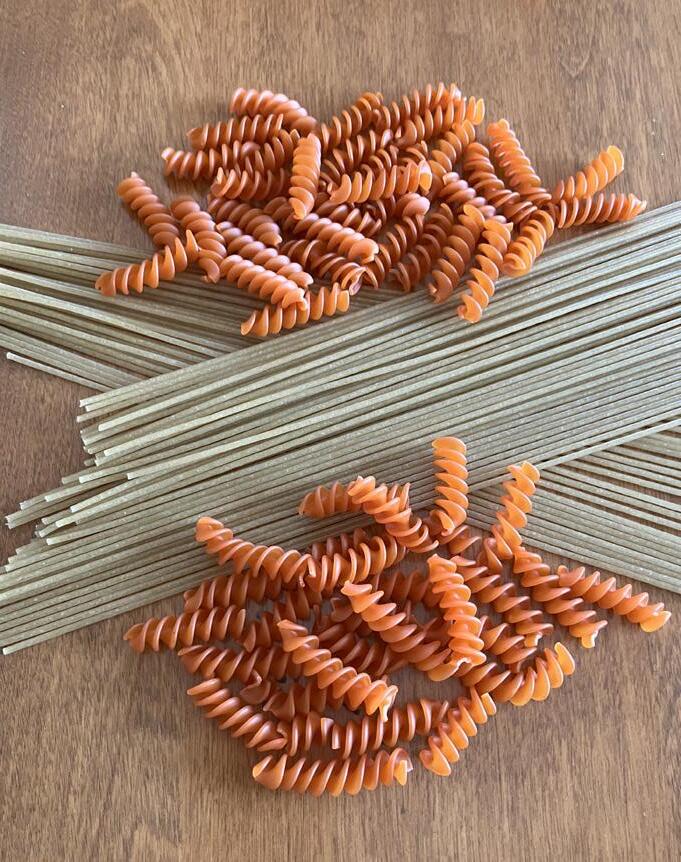
• Fewer and healthier carbs. Not only do plant-based pastas have
fewer carbs, but the carbs they do have are the “good” ones—the complex ones. Because these carbs have more fiber than simple carbs, you’ll feel fuller longer and be less likely to overeat. Moreover, their slower digestion provides a steady stream of energy and minimizes spikes in blood sugar.
• Good for the planet. Eating more plant-based proteins can also help protect the environment. Livestock accounts for around 14.5% of the world’s greenhouse gases each year, which is roughly the same amount as the emissions from all the cars, trucks, planes, and ships combined in the world today. Holy cow! Greenhouse gases, as you may know, contribute to global warming and climate change.

Anne Palumbo is a lifestyle columnist, food guru, and seasoned cook, who has perfected the art of preparing nutritious, calorie-conscious dishes. She is hungry for your questions and comments about SmartBites, so be in touch with Anne at avpalumbo@aol.com.

Read nutrition labels carefully. While most types of plant-based pasta are similar in terms of calories and overall nutrition, they can vary greatly in protein and fiber content. Also, plant-based pasta shouldn’t take the place of whole vegetables in your diet, as the nutritional content of pasta pales in comparison to actual vegetables. Consider adding vegetables to your pasta dishes to boost nutrients.

Serves 4-6
For the dressing:
1 garlic clove, minced
½ cup fat-reduced mayonnaise
1/3 cup light sour cream
½ cup fresh parsley
½ cup fresh basil
2 tablespoons chopped chives
2 tablespoons fresh lemon juice
1 tablespoon olive oil

½ teaspoon salt; ¼ teaspoon coarse black pepper
For the salad:
8 oz plant-based pasta (I used red lentil for high protein and fiber)
1 cup cherry tomatoes, halved
2 medium carrots, chopped
1 cup shelled edamame, cooked Parmesan cheese, shredded
Boil the pasta in a large pot of salted water, according to the package’s “al denté” instructions. Once pasta is finished cooking, rinse under cool water and drain well.
While pasta is cooking, make the dressing. Combine all the ingredients in a food processor or blender and purée until smooth.
Transfer cooled pasta to a large serving bowl. Add the cherry tomatoes, carrots, edamame, and dressing, tossing well to combine. To serve, top with grated Parmesan.

Buffalo resident was diagnosed with the condition at age 25. Now 52, she has become an advocate for those who suffer from it. “We are all in this together,” she says
By Jane SchmittVitiligo is easily defined as an autoimmune disorder. But it’s not so easily understood.
Lisa Toner knows that all too well.
For many years, the Buffalo woman has lived with the condition, which strips the skin of melanin and results in white spots or blotches. And along the way she has endured the physical and emotional challenges that come with it.
Now she’s looking to help others and increase awareness through a local chapter of VITFriends.org, a national support community for people with vitiligo.
Toner launched Blooming Buffalo VITFriends on Facebook in January with a strong message: “We are all in this together.”
“Being brought up on Buffalo’s west side and spending many years in Texas before returning to New York, I have learned about adapting to change,” she said. “[But] the most agonizing change started when I was 25 years young. That’s when vitiligo inserted itself into my life.”
She was living in San Antonio at the time and working at a restaurant when she noticed tiny white spots
around her cuticles. Over time, the spots spread on her hands and then to other parts of her body. Her primary doctor diagnosed it as vitiligo.
The National Institute of Arthritis and Musculoskeletal and Skin Diseases (NIAMS) describes vitiligo as a chronic autoimmune disorder that causes patches of skin to lose pigment or color. This happens when melanocytes — skin cells that make pigment — are attacked and destroyed, causing the skin to turn milky white.
Patches typically appear symmetrically on both sides of the person’s body, such as on the hands or knees, but sometimes there can be a rapid loss of pigment over a large area. Vitiligo, which affects an estimated 2% of the population, is seen in people of all ages and races. The condition also may cause abnormalities in the retina.
There is no cure, according to NIAMS, but treatments may hinder the progression and help the skin tone to appear more even. They include medications such as corticoste-
roids; light therapy or phototherapy; and depigmentation therapy.
But costs may be high and insurance coverage varies.
Emotional stress, sun exposure and trauma to the skin such as a cut or burn can trigger the spread of vitiligo. Over the years, Toner herself has tried creams and gels, but said she isn’t satisfied with the results.
“I think one of the biggest misconceptions is that it may be contagious,” said Toner, a direct support specialist at Community Services for Every1. “People may be afraid to hug or touch you; they think something bad is going to happen to them. I can see the fear in their eyes, the uncertainty. That has been a struggle for me.”
Indeed, the condition can trigger anxiety, depression and isolation as individuals limit social interaction because of their physical appearance. As Toner put it, they sometimes become “prisoners of their own skin.”
“I have had to constantly remind myself that even though my skin was changing, my true self, my true identity, was not changing along with it,” she said. “It’s hard. When I was younger, my mother told me that people are often afraid of what they don’t understand. And in the 26 years that I’ve lived with vitiligo, I have found that, yes, there is ignorance. But people are more accepting of it now, I believe, because there is more about vitiligo in the media. And there is a lot of information online.”
While outreach and education chip away at the stigma, Toner said there still is much to be done. Working to increase awareness are organizations such as the Vitiligo Research Foundation, the Vitiligo Support and Awareness Foundation and the Global Vitiligo Foundation. Another resource: www.myvitiligoteam.com
June 25 will mark the 13th annu-
al World Vitiligo Day, whose mission is to create a safe space for those affected by vitiligo to learn, share and celebrate. (See 2023.wvdusa.org for information about U.S. events.)
“In America there are [millions of] people diagnosed with vitiligo,” said Toner. “There are others who have not been diagnosed because they are afraid to go to a doctor and get checked out. They live in secrecy, they live with shame and embarrassment, and they hope it will go away on its own.”
She created Blooming Buffalo VITFriends as a way of connecting with others. Now she is busy reaching out to area dermatologists who can encourage patients looking for help and resources.
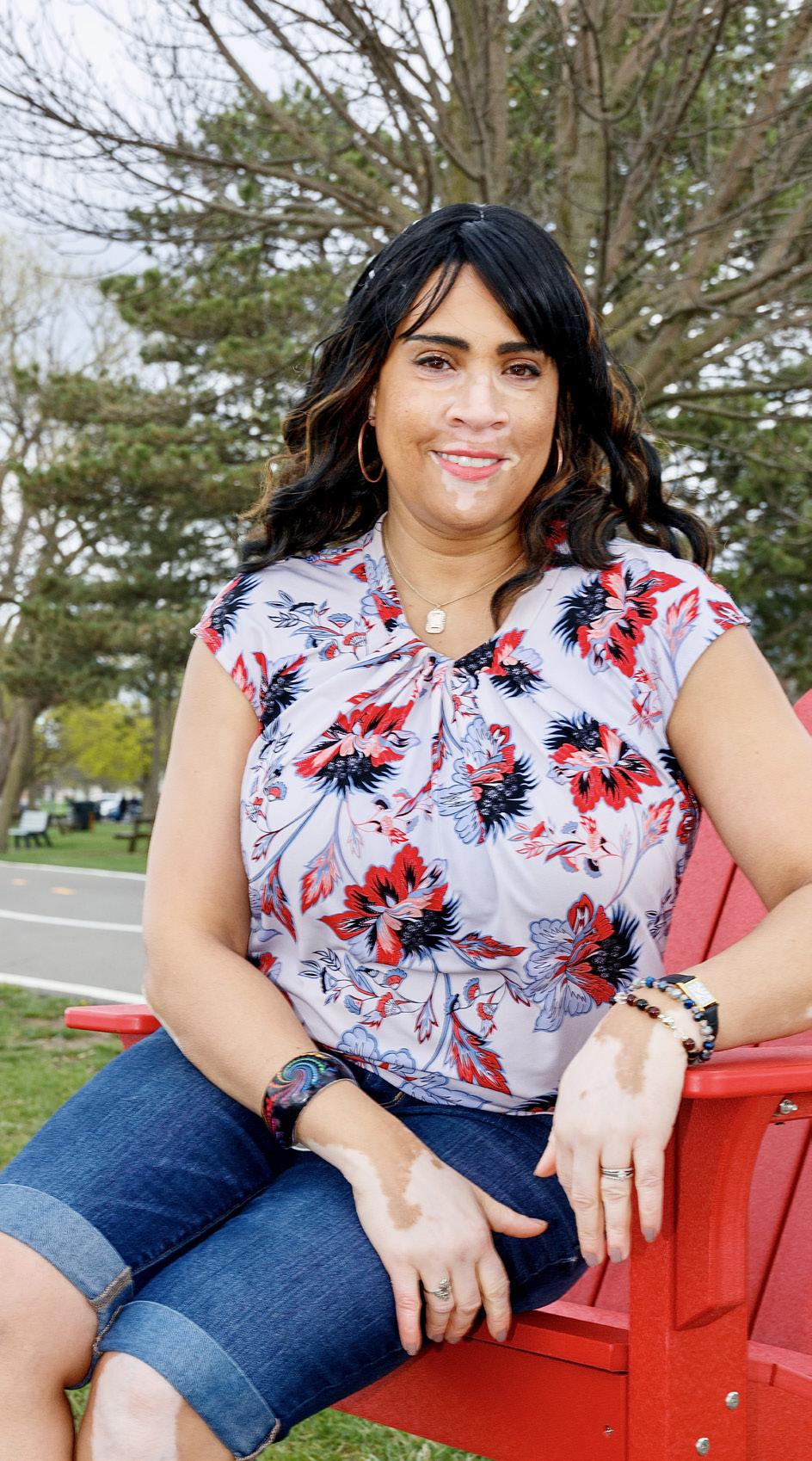
“My goal, first and foremost, is to be a support for people in this community who are living with vitiligo and to let them know that they are not alone,” Toner said. “When they hear a voice inside say, ‘You’re ugly,’ I’ll be that encouragement to them and say, ‘Hey, we are in this together and I’m not going to let you sink deeper into this hole. I have been where you are and was able to get out.’ Everybody has their own journey with vitiligo, but there is help out there.”
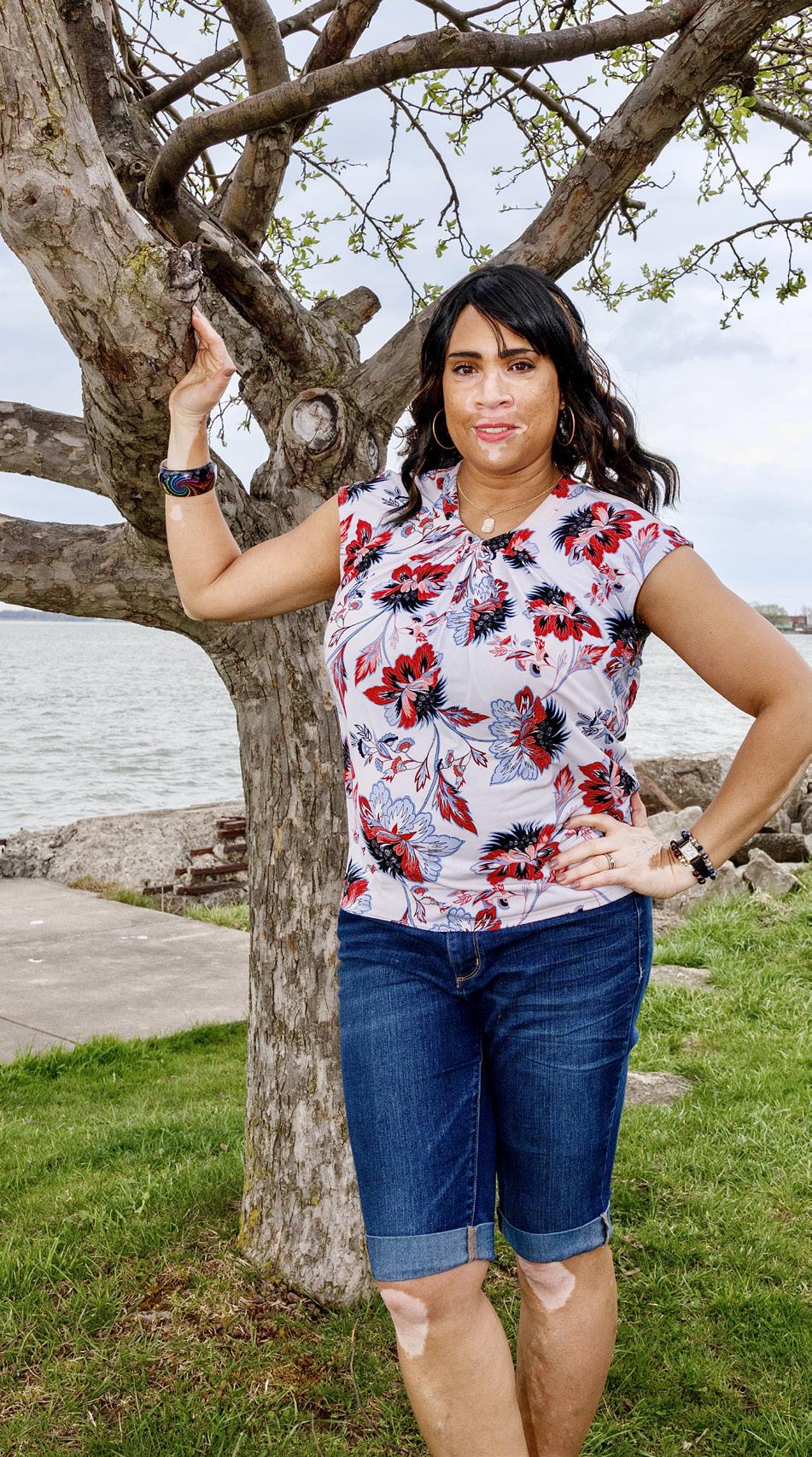
“My goal, first and foremost, is to be a support for people in this community who are living with vitiligo and to let them know that they are not alone.”
-Lisa Toner.Photos courtesy of Donny Green.
It started as a typical Sunday in the fall. Football on the TV, relaxing but with one noticeable difference. I had felt some shortness of breath throughout the day when I suddenly began to feel breathless. Totally breathless.
Afraid-I-was-going-to-die breathless.
While the ambulance was on its way, I told my girlfriend in between breaths to tell my adult daughter that I loved her and that it would be OK.
I didn’t know what was happening to me.
The ride in the ambulance was seemingly forever, but they did have oxygen on me. That helped until we were able to get to the emergency room where the medical staff used a BIPAP machine to force air into and out of my lungs regulating my breathing.
I asked what had happened to me. The doctor said it was a flare-up of my COPD.
Ten years ago, I was told I had COPD — chronic obstructive pulmonary disease. I didn’t really think about it. I thought it was something like a bad cough or being a little short of breath on occasion.

Was I ever wrong.
For the first decade after diagno-
sis I didn’t really notice anything. I was also told I had asthma and that I needed to use an inhaler. The doctor gave me a daily inhaler to use for the COPD and an emergency inhaler (albuterol) for sudden breathing problems. Frankly, the daily inhaler did little to nothing for me. I had used it that day but the flare-up occurred anyway.
I started seeing a pulmonologist. We talked about my condition and he prescribed a new inhaler, one with three different medications in it. He also prescribed pulmonary rehab to help strengthen my lungs.
That was the beginning of my journey to understand and live with this disease. Now it was time to learn more.
According to the Centers for Disease Control, COPD is a group of diseases that cause chronic breathing difficulties. They include chronic bronchitis and emphysema. Approximately 16 million people in the US have the disease.
Millions more have it and don’t know it.
There is no cure.
The disease is ranked in stages from one to four. Stage one is mild; you might not even notice you have it.
Stage two brings on more coughing and shortness of breath while doing everyday things like light exercise or housework.
By stage three you’re in the severe category of the disease. Your breathing capacity is significantly lower and daily chores may become impossible. Flare-ups are also more common.
At stage four you are at very severe or end-stage COPD. You’ll have more frequent flare-ups and one could turn out to be fatal. Your breathing is likely labored all the time and you’re probably on supplemental oxygen.
What are the causes of this illness? Smoking is one cause along with environmental factors like pollution and, yes, secondhand smoke. It can also be hereditary.
There are steroidal treatments for COPD. They are usually inhaled at least once a day. There are also rescue inhalers such as albuterol which act quickly to open up the lungs.
For the most severe cases doctors may prescribe a lung transplant or other surgery that blocks off part of the lungs so less air is needed to inflate the lungs to their fullest.
What’s my life like now? I’m a lot more careful about potential problems related to my breathing. I work to avoid cigarette smoke and other pollutants that can bring on problems. I also try to maintain an exercise program to help my lungs and overall health.
The American Lung Association says I live in an area that ranks high for cleaner air. (www.lung.org/ research/sota/city-rankings/clean-
est-cities) That’s a good thing. COPD is a struggle for me and I do worry that I could have another flare-up. It’s certainly possible, but I go about my life as normally as I can. I can’t do all the things I used to such as long hikes or even short walks sometimes, but I don’t let the disease control me. With the proper care you may be able to live more freely, too.
Committed to exceptional, family-focused care – provided by over 60 physicians and 40 nurse practitioners and physician assistants from 29 locations across CNY – FCMG is one powerful ally in the care of your growing family. Our comprehensive range of services includes:
•General family care & internal medicine
•Immunizations, annual check-ups
• Behavioral health
• Other specialties needed
•Ophthalmology by growing families
•Ear, nose and throat
All supported by our own clinical lab and other in-house diagnostic resources. For expert pediatric care provided in a family-friendly atmosphere – make an appointment with FCMG, today: New patients and families welcome!.
Let our family care for yours! 315-472-1488 • fcmg.org

Nearly 70 million Americans are living with a sleep disorder, according to the Centers for Disease Control and Prevention. If you’re one of them, consider your activity level.
“There are so many benefits to physical activity,” said Heather Henderson, psychiatric nurse practitioner in private practice in Syracuse. “Physical activity can improve physical and mental health and reduce stress, which in turn can help with sleep. Physical activity also makes it necessary for the body to repair itself, leading to better quality sleep.”
Henderson’s specialties include insomnia and disrupted sleep.
“People who exercise tend to be better sleepers,” said Michael Yurcheshen, physician, associate profes-sor in the department of neurology, sleep medicine at University of Rochester Medical Center. “Some of this may have to do with the exercise
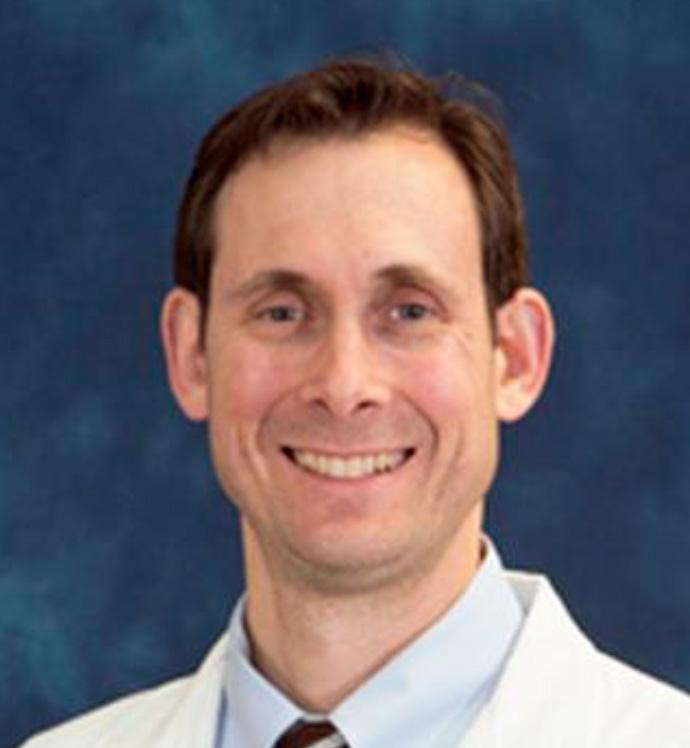
itself; some of it may be that they’re disciplined about sleep. It takes a fair amount of motivation. You have to be on point and dedicated to it. Sleep habits are a matter of consistency and commitment.”
It logically follows that someone disciplined to maintain good exercise habits also maintains good sleep habits.
Exercising regularly helps mitigate the effects of stress, which Yurcheshen said can make a big difference in falling asleep and staying asleep. Exercise helps regulate stress hormones, the kind that may interfere with sleeping well.
Activity can also affect core body temperature. Although sleep experts recommend a cool environment to promote good sleep, exercise can affect body cooling as well, if timed right.
“When you exercise, your core body temperature goes up but within
an hour, that core cools,” Yurcheshen explained. “That’s one of the signals or cues your body uses to initiate rest. When evening comes, your core body temperature drops by a degree or two regardless of exercise. We can use exercise as a specific therapy, particularly ‘night owls’ who find it difficult to fall asleep. Exercising in the evening, though not too late, can play into this. You can get a similar effect with a warm bath.”
If a morning workout fits your day better, just a 30-minute walk in the early evening can provide the same benefit to sleep as timing your workout to benefit sleep.
“A lot of people find exercise helps them stay alert during the day, so there’s less napping during the day,” Yurcheshen said. “They’re less sleepy when they go to bed.”
Light exercise such as yoga and stretching may be better for people whose only chance to exercise is
 By Deborah Jeanne Sergeant
By Deborah Jeanne Sergeant
Numerous studies have linked the Mediterranean diet to a reduction in prostate cancer risk and improved outcomes for men diagnosed with prostate cancer. While typically touted for its benefits in losing weight and improving heart health, the effect appears muddled as far as its effect on the prostate.
“It is important to conduct more studies focusing on risk factors for prostate cancer by stage and grade,” said Ying Wang, senior principal scientist at the American Cancer Society. “In addition, the most recent nutrition and physical activity guidelines from the American Cancer Society found that men diagnosed with prostate cancer who consumed a Mediterranean dietary pattern tend to have lower risk of death from any cause.”
This may suggest that the Mediterranean diet may promote overall good health in some men, irrespective of the presence of prostate
cancer.
“While some evidence suggests that following a Mediterranean diet may help reduce the risk of prostate cancer in certain populations, it is important to replicate these findings in other populations and look at different prostate cancer outcomes,” Wang said. “Furthermore, it is essential to recognize that diet is just one of many factors that can contribute to the development of cancer.”
She added that other factors, such as age, family history and race and ethnicity cannot be controlled; however, “avoiding tobacco use, maintaining a healthy body weight, engaging in regular exercise, and limiting alcohol consumption, also help to lower the risk of developing prostate cancer.”

The Mediterranean diet loosely aligns with the dietary portion of the American Cancer Society guidelines for diet and physical activity, which
emphasizes a mostly plant-based diet.
“Men who are at elevated risk of prostate cancer may want to discuss their diet and other lifestyle factors with their urologist or other healthcare provider, particularly a registered dietitian nutritionist to help reduce their risk,” Wang said.
Why the Mediterranean diet appears to reduce the risk of developing cancer has to do with the type of foods consumed—and those that aren’t. It focuses on plants, nuts, seeds, fish and in general, whole foods. That’s a pretty good foundation for healthful eating, according to David Albala, urologist with Associated Medical Professionals of New York, which operates offices in Syracuse and other locations.
“We talk about it with patients,” Albala said. “It’s important because different diets can make a difference. There’s a growing body of evidence looking at foods to eat and avoid. Plant-based and Mediterranean diets
clos-er to bedtime. The meditative aspects of yoga can provide mental and emotional calm. Stretching can help improve comfort and relaxation once in bed.
Anyone who experiences an ongoing lack of restful sleep should seek help from a healthcare provider to rule out any other health issues and to obtain advice on what to do to improve sleep. The provider can also recommend a sleep specialist if needed. Before beginning a new exercise regimen, ask a healthcare provider what is right for you.
can help with patient health for cardiovascular and prostate health.”
The foods to avoid include processed foods, cured meat and sugar. Red meat should be minimized.
“Populations that have high intake of sat fat and red meat have higher instances of prostate cancer,” Albala said.
He advises patients to read “Low-Fat Lies, High-Fat Frauds” by Kevin Vigilante, physician and Mary Flynn, Ph.D., as he has found it both easy to read and full of science-based information.
Although some associate the Mediterranean area with wine drinking, men concerned about prostate cancer should avoid alcohol or those who do should limit their consumption to no more than two servings daily. As for the two-per-day limit for men who drink, it’s not something that can be rolled over for a weekend binge.
Overall, “the Mediterranean Diet is one of the healthiest eating patterns in the world,” said Jane Burrell, registered nurse and associate teaching professor at SU.
What she doesn’t want men to think is that just a few dietary tweaks like adding a “superfood” to an unhealthful diet represents a silver bullet for beating prostate cancer. She advises eating an overall healthful diet as part of a healthful lifestyle of eating seasonal and local whole foods that are minimally processed.
“Summer is an ideal time to adopt Mediterranean eating patterns,” Burrell said. “Taking advantage of farmers markets is one way to eat seasonal and local foods. Longer days also allow for longer mealtimes with socialization around the dinner table. The Mediterranean diet is associated with lower rates of almost any chronic disease, including prostate cancer.”
To support good health, men should receive regular care from a healthcare provider, sufficient aerobic and resistance exercise, adequate sleep, stress management and avoiding substance use, including tobacco.
If you struggle to sleep well at night, you could have a sleeping disorder. However, your sleeping habits—sometimes called “sleep hygiene”—could be to blame.
Some people may not realize they sleep poorly and that it contributes to the state of their overall health.
“If anyone has concerns that he or she is awakening during the night with difficulty breathing or snoring heavily, he or she should consult his or her provider to discuss a referral
to a sleep study,” said Heather Henderson, psychiatric nursing practitioner in private practice in Syracuse. “Someone should also consult an expert if they have been trying to implement healthy sleep habits, but continue to experience difficulty falling asleep, staying asleep, or remaining awake and alert throughout the daytime.”
Insomnia is among Henderson’s specialties.
Addressing sleep hygiene represents the first step in obtaining
Sleeping: you’ve done it since you were a baby and it may seem like the easiest thing to do.
Until it isn’t.
That’s where a sleep specialist can help patients regain restful slumber.
Sleep specialists can include medical doctors who have
training in physiology, pathology of the neurological system and sleep. Or they could be like Heather Henderson, a doctor of nurse practitioner in private practice in Syracuse, who specializes in anxiety disorders, depressive and mood disorders, lifestyle changes and stress management, women’s issues and insomnia and sleep disorders.
Including sleep disorders among her specialties makes sense. Each of these challenges — anxiety, mood disorders, stress — can contribute to sleep disruption, and poor
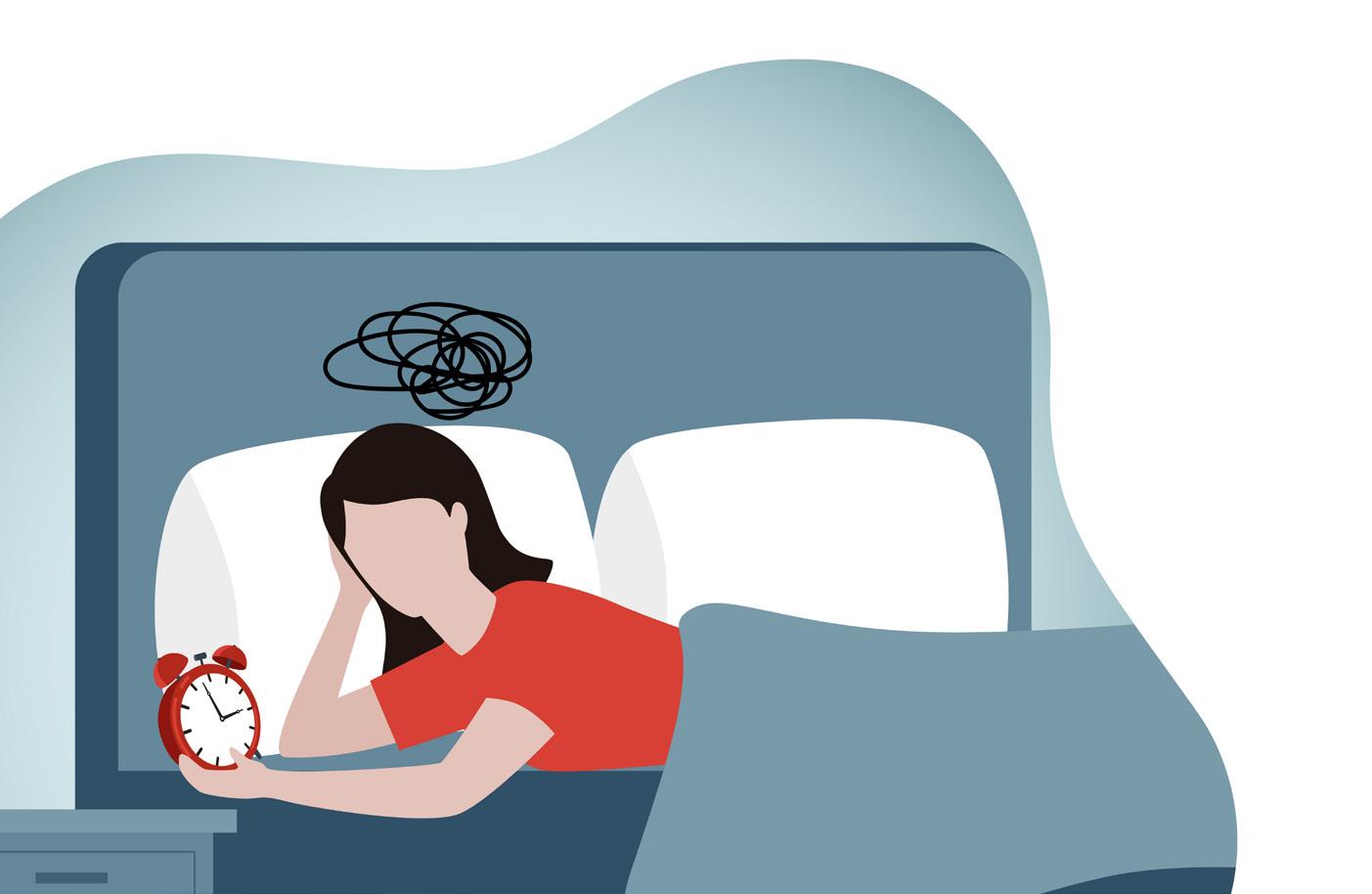
adequate sleep. For many people, that resolves the problem without the intervention of a sleep expert.
“If someone feels that he or she has good sleep hygiene habits and continues to experience difficulty with sleep, an examination of other causes for sleep disturbances, such as sleep apnea, is warranted,” Henderson said.
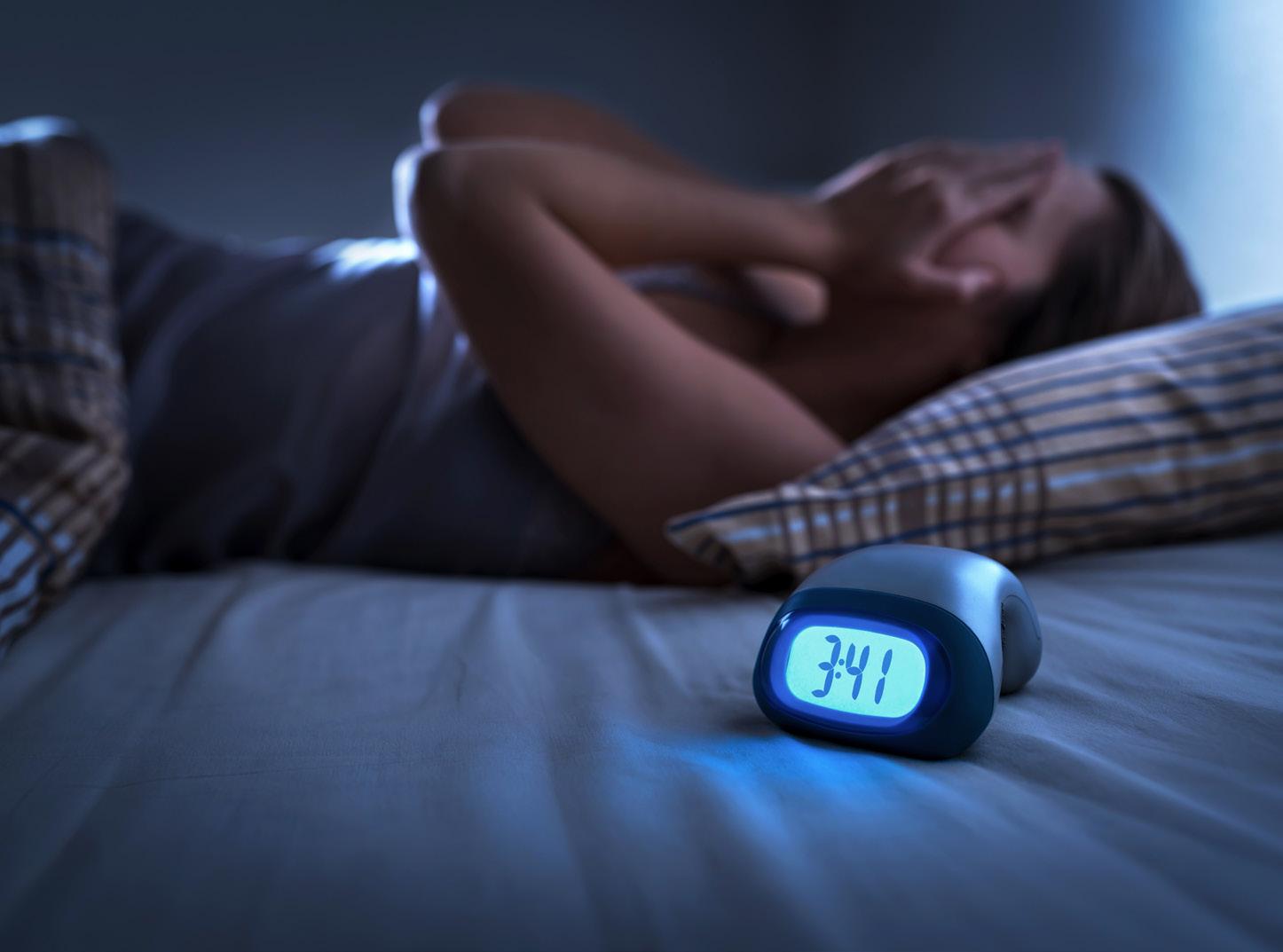
Oftentimes, others in the home can let people know if they’re snoring and possibly have sleep apnea, which disrupts restful sleep.
It’s also helpful to look at medications that can disrupt sleep and to address that with the prescribing care provider. For some people, food and beverages play a role in sleep disruption.
“Of course, caffeine is the biggest culprit here,” said Jane Burrell, registered dietitian, specialist in lifecycle nutrition and medical nutrition therapy and associate teaching professor at SU. “Caffeine is a central nervous stimulant that can disrupt sleep. Consideration of all caffeine sources is important.”
In addition to cutting back on coffee and energy drinks after noon, look at consumption of black and green tea, sodas like cola and even orange soda. Chocolate contains 12 milligrams of caffeine. Although not as much as coffee’s 200 mg. (or black tea’s 100 mg.), it does contribute to the daily intake.
When you eat also may matter.
“Eating late at night may disrupt sleep as well,” Burrell said. “Additionally, irregular or inadequate sleep changes eating behaviors and leads to great consumption of highly palatable comfort foods.”
This may provide additional motivation to improve sleep, since comfort foods tend to cause weight gain.
Sleep hygiene is not about showering before bed, but the good sleep habits and environment that influence sleep. These include keeping the bedroom dark, cool and comfortable and reserved only for sex and sleep. Don’t watch TV or go online while in bed. Eliminate stressors in the room, such as piles of unfolded laundry, stacks of unopened mail or other reminders of tasks. Wear comfortable apparel. Consider upgrading any worn bedding and pillows and the bed itself. Most mattresses are made to last only six or seven years. If your bed partner disrupts your rest, seek help for issues such as snoring and restless leg syndrome. Address any pet disruptions also, as these can interrupt sleep.
Set a regular bedtime and stick to it, even on weekends. Use white noise to mask household sounds. Hanging curtains and including more fabric in your décor, like a tapestry wall hanging, can help absorb unwanted sounds.
Stop using screens two hours before bedtime and wind down with a relaxing bedtime routine such as a warm bath. Write down any troubling thoughts to set them aside until tomorrow.
Many people say that prayer, mindfulness or meditation helps them settle their thoughts before bedtime. Try using ear plugs and a sleeping mask for sensory deprivation.
sleep can also contribute to these other areas.
“I enjoy helping people improve their sleep because sleep is vital to optimal physical and mental health,” Henderson said.
Most adults need seven to nine hours of sleep per 24-hour period, according to the Centers for Disease Control and Prevention, to perform at their optimal mental and physical level.
In addition to the above healthcare professionals, sleep specialists could be “sleep coaches” whose training may be much less medical in nature and tends to focus more on the sleep habits and environment than medical and mental health problems that affect sleep. Medical schools don’t offer a sleep major. However, as a sub-specialty, caregivers in many areas of medicine take additional concentrations in sleep to offer greater assistance to patients struggling with sleeping well.
Typically, sleep specialist is a sub-specialty of specialties such as neurologist, otolaryngologist or pulmonologist. Specialists may work in a variety of settings, including as sleep coach or educator.
Technicians likely work in a sleep lab of a hospital or outpatient setting as part of a team of providers. Sleep medicine physicians may teach or head sleep medicine departments. A sleep specialty may also augment a
care provider’s other training, such as with Henderson.
“I enjoy providing others with tools to work on sleep hygiene because doing so can also help improve so many other conditions that I see, such as depression and anxiety, and can greatly improve quality of life,” Henderson said.
Figuring out what’s disrupting their sleep and helping them resolve it can offer patients a better chance at a baseline of good health. That facilitates working on the other issues they’re experiencing, whether involving mental health, hormonal fluctuations, or something else. Not resting well exacerbates any other physical or mental health issue going on. Unfortunately, many people wait for months or even years before seeking help with their sleeping problems.
The demand for sleep specialists is unlimited, since many people nationwide are not sleeping well for a variety of reasons.
The Bureau of Labor Statistics does not collect employment data for sleep specialists, since the specialty can be applied to so many different types of careers in a variety of environments. According to Glassdoor. com, the estimated pay of a sleep specialist is $58,440 annually and for a sleep medicine physician, $253,914 per year. Salary.com listed the average salary for a sleep technician as $62,101.
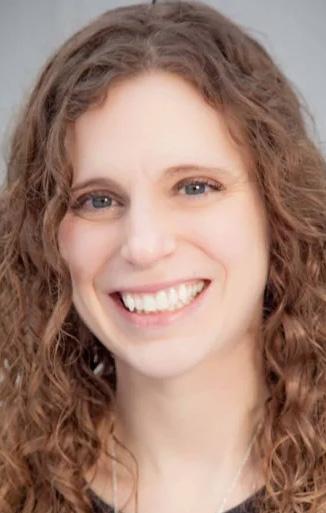

After what feels like months of grayness, snow, rain and cold, my family is more than ready for sunshine, cookouts, hikes and adventures.
However, the thing that takes us on many of those adventures isn’t ready. That’s because my car doesn’t have its summer bin.
What’s a summer bin? It’s a term I made up and a thing I can’t live without. It’s basically a bin that I place in my car and cram full of stuff. It’s a tad messy, but it’s essential to ensuring our summertime fun goes off without a hitch. I fill my bin with things that make problems go away. So when someone falls in a mud puddle full of ticks on an empty stomach, it’s no big deal and we can keep rolling with the fun.
If you’re interested in overcoming approximately 75% of all summer adventure mishaps, here is my expert advice on how to make and maintain your own summer bin.
First you need a bin or a box, and then you need:
• Plastic bags — These handy contraptions cover so many bases. Is someone getting motion sickness?
Plastic bag to the rescue. Did someone have an accident or spill something gross on themselves? Plastic bags got you covered.
• Plastic buckets — This suggestion may sound like a gross misuse of space, but plastic buckets are more than highly efficient tadpole or rock transporters. They also make great handwashing stations or mini trash cans. In a jam, they can become roadside commodes. Buckets are useful.
• Liquids that aren’t stored in plastic or cans — This may seem oddly specific, but plastic bottles and heat don’t mix well. And cans literally blow their lids off when temperatures get high. But, a nice glass or aluminum bottle or a carton with some water can be very handy. If you reuse a bottle, just make sure to keep the water relatively fresh.
• A tick kit — Ticks are the dangerous arachnids that can put a hard stop on fun times. But, if you have a tick kit, you can remove these nasty
little critters. Choose a good kit with multiple types of tweezers so you can get a tick off of any part of your body.
• Bug spray and sunscreen — Who wants to remember their summer adventure by way of itching and pain? Not only are sunburns and insect bites annoying, they can be dangerous. Having bug spray and sunscreen on hand helps you safely enjoy summer.
• Food that won’t melt — Having snacks on hand for the family is always a good call. But, if those snacks have melted into piles of goo, who wants them? Pack snacks that don’t easily melt. For example, pack energy or snack bars with minimal chocolate. Things like dried fruit and nuts also maintain their integrity in the heat.
• A change of clothes/shoes — Including these items in your bin can take up a lot of room. So, try buying flip-flops that store easily. For clothes, roll them neatly and rubber band them. Then place them in a clothing storage cube. Having a change of clothes for everyone in the family can turn many mini-crises into tiny mishaps.
• Wet wipes and paper towels — When it comes to messes, there are very few that wet wipes or paper towels can’t wrangle. Having these two items will get you out of dropped ice cream, spilled slushies and far grosser situations.
• A frisbee, ball or chalk — If you have kids, you’ve probably heard the phrase, “I’m bored.” Pack your bin with activities for kids of all ages. Sidewalk chalk can be used to create art and games. Balls and frisbees can be used for more than just playing
catch. Be creative.
• Garbage bags — Garbage bags can be used for, well, garbage. But, you can also sit on them when the ground is wet or muddy. You can use them to protect the seats of your car. If they aren’t scented, they also make great ponchos.
• Utensils and paper plates — When you travel with utensils and paper plates, you can picnic just about anywhere, including the back of your car. Avoid take-out or packing snafus and always travel with dining wares.
• A packable blanket — Find a blanket that rolls or folds easily. If you can’t find one or want to use an old blanket, keep it contained with a couple of bungee cords. Having a blanket will come in handy for an instant sitting area or a stargazing mat.

• A small first aid kit — Keep the essentials in your kit. Include items like bandaids, ointment, insect bite treatment, a small ace bandage, an instant ice pack, some medical tape and gauze. With these items, you can be ready to treat minor scrapes, cuts and splinters.
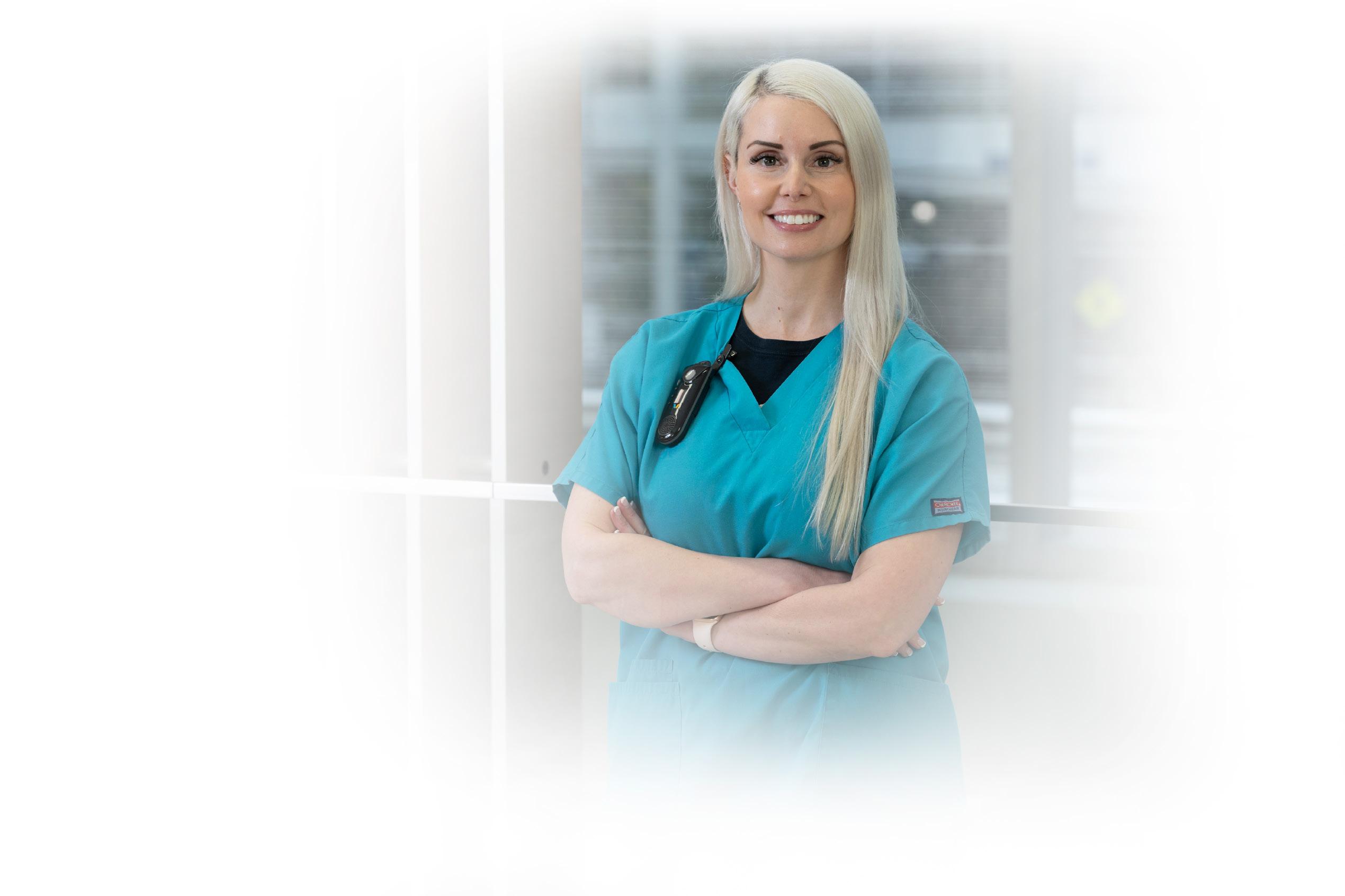
• Hand sanitizer — Because summer wouldn’t be summer without touching some gross things, just keep an extra bottle of sanitizer in your bin.
My last piece of advice for your summer bin is properly maintaining it. If it goes in the summer bin, it gets a label. That label can be as simple as a piece of painter’s tape. The one rule of the summer bin is what goes out must go back in or be restocked, no exceptions. Now, pack that bin, get in your car and go find some adventures.
Arthritis is a general term that many people use to describe pain or swelling in their joints. The health condition affects about one in four U.S. adults (23.7%) or about 58.5 million people, according to the Centers for Disease Control and Prevention.
“We are living longer now and the baby boom generation are coming full force into the age group where arthritis is becoming an issue. We are just using our joints longer and there is simply more wear and tear occurring,” said physician Daniel Alexander, medical director of orthopedics and chief administrative officer for Auburn Hospital.

Alexander offers five facts about arthritis.
Osteoarthritis, also called degenerative joint disease, is the most common form. Arthritis symptoms vary depending on the type of arthritis and its severity. The most common symptoms include joint pain, stiffness and swelling. It can also cause fever, weight loss and fatigue. When patients ignore symptoms, conditions worsen to the point where it reduces mobility making daily tasks more difficult. There is also inflammatory arthritis, which often connects to autoimmune issues.
A person’s chance of developing arthritis increases due to several factors, including age. Rheumatoid arthritis on the other hand is more common with women and people with a family history of diabetes.
“Arthritis is an essential topic
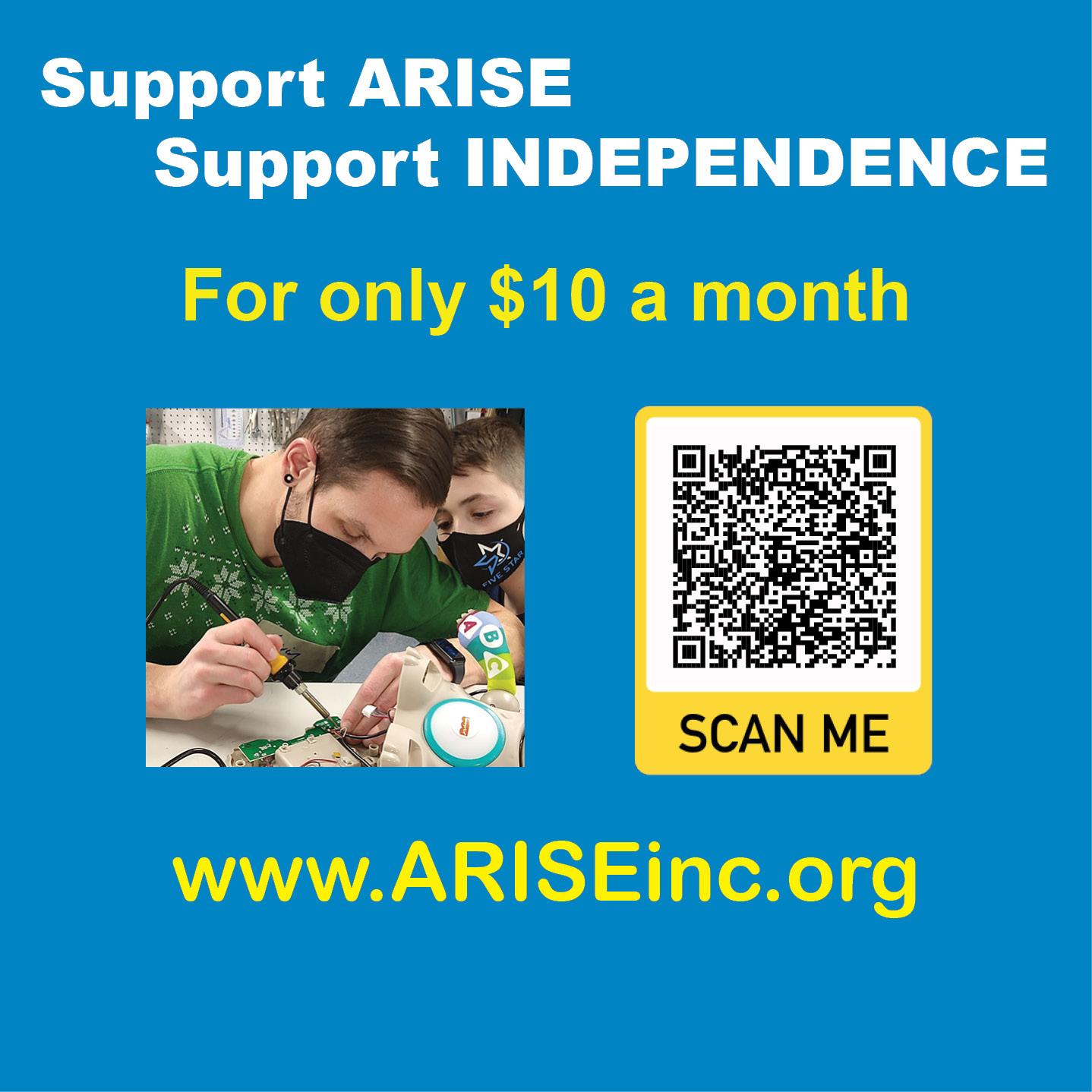
because stiff or achy joints can affect anything weight-bearing, exercising, running, cutting or pivoting. It’s a condition where any kind of shifting can cause increased pain,” said Alexander.
With the rising age of the American population, it is no surprise that there is an increased number of older individuals with arthritis. However, many younger people also develop it. The reasons vary.
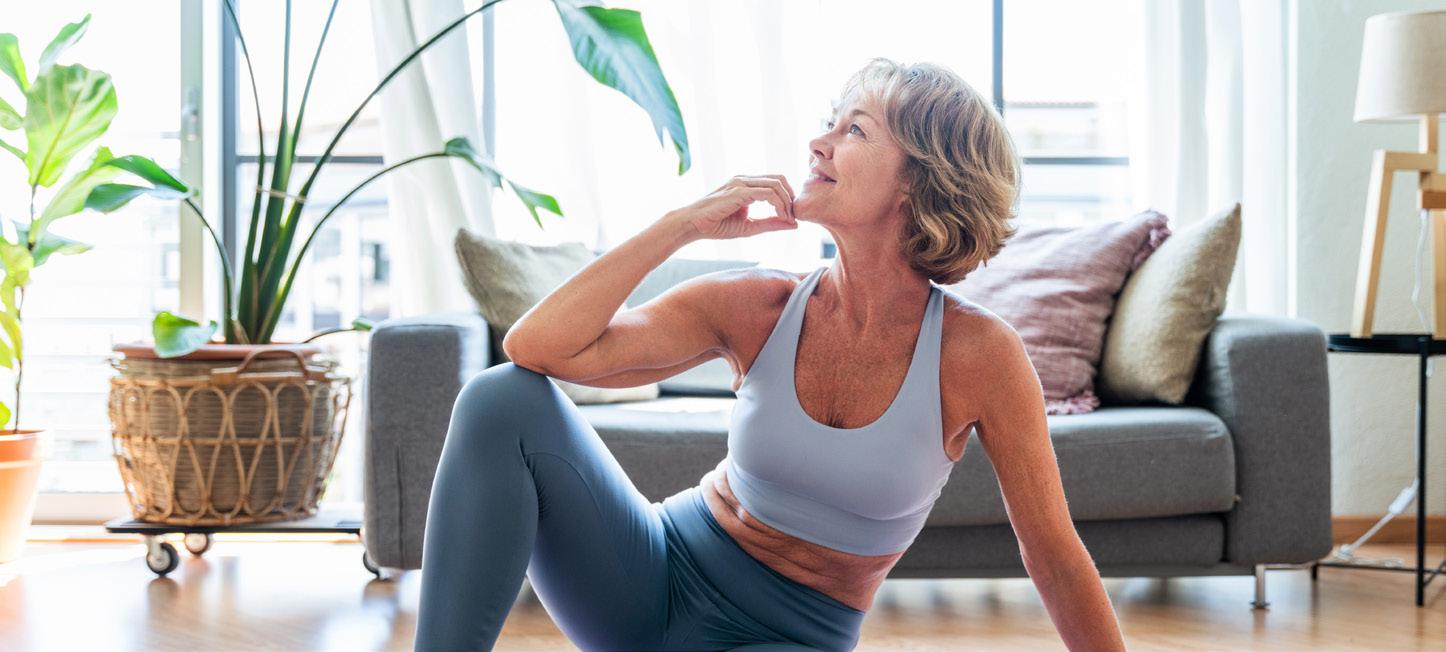
“This younger generation is incredibly active and bigger risk takers. When you tear any muscle like your ACL or have any traumatic injuries when you are younger, you could see some issues or deterioration 10 to 15 years later if you maintain the same aggressive active lifestyle,” said Alexander. “Also, this generation is far more obese as a general population than younger people 40 years ago. We are also seeing more autoimmune issues younger in people.”
In addition, there is better awareness by primary care physicians and providers to screen for symptoms of rheumatoid arthritis.
“It is also very important to know what kind of arthritis you have. For example, rheumatoid arthritis is a disease where your immune system is attacking healthy cells in the body and attacking its own joints,” said Alexander.
There are a variety of treatments for arthritis. The most effective treatment requires differentiating
IN GOOD HEALTH — WNY’S HEALTHCARE NEWSPAPER
• Find out more about the new FDA-approved drug to treat hotflashes
•Heavy periods? Don’t miss reading this story
• Weight loss — why exercise alone won’t help
which type or types of arthritis an individual has. For osteoarthritis, some over-the-counter oral medications such as acetaminophen, ibuprofen or naproxen, — as well as topical medications such as diclofenac gel — may be effective for mild to moderate arthritis.
“My philosophy is trying conservative treatments first. My patients are the ones who often first tell me they want joint surgery and I have to explain to them that it isn’t always the best option to start with that,” said Alexander. “A large number of people can see significant differences without surgery.”
Other treatments include medication, physical therapy and lifestyle changes. Some medications reduce inflammation and pain, including nonsteroidal anti-inflammatory drugs and disease-modifying antirheumatic drugs. Physical therapy also allows improving mobility and reducing pain.
Alexander also advises maintaining a safe weight as a proactive solution.
“For every extra pound you weigh, that is putting three extra pounds on your joints. Exercising is very important to having a high quality of life,” said Alexander. “Motion is life. If you live a sedentary life, you are going to be in trouble.”
Most types of arthritis may have a genetic component, said Alexander. “When speaking with patients, they often tell me their parents or grandparents had similar symptoms. Studies have shown that family history may contribute to rheumatoid arthritis. But it doesn’t entirely explain all the aspects of an individual’s risk. The condition can develop with someone with no family history but also often family members are exposed to the same environmental risk factors that could cause rheumatoid arthritis.
“There is some hereditary component to osteoarthritis. If your grandmother and mother had the ailment then you should be aware
that it may occur with you. That is why we always say family history is essential when discussing your health history with your physician,” said Alexander. “That being said we have to remember that your daily activity or non activity as well as your lifestyle will play a key role in your overall health.”
Alexander sees many patients who believe they need to keep pressing through when they are in agony and discomfort. In fact, that philosophy can cause more harm.
“People have this perception that you have to just grind and push through pain, but that is not true. If you have persistent shoulder, knee, back or any kind of joint pain, you could be doing more damage if you don’t slow down on certain activities,” said Alexander. “We need to stop the notion of no pain no gain. Sometimes you can rest a muscle and you can see a significant difference.”
WOMEN’S HEALTH SPECIAL DON’T MISS THE NEXT ISSUE OF
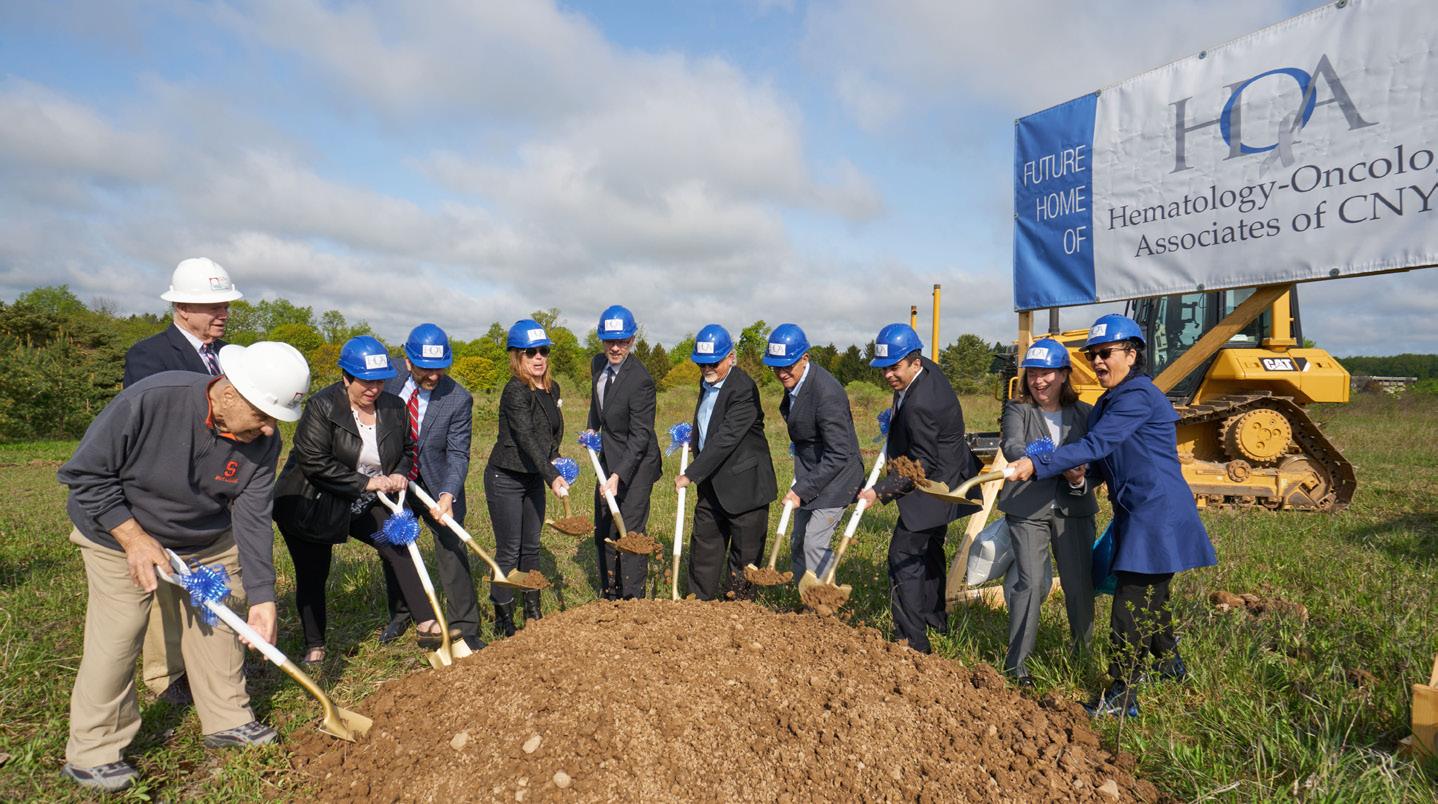
Hematology-Oncology Associates of CNY has outgrown its Onondaga Hill location, according to Maryann Roefaro, CEO.
Construction has begun on a 21,000-square foot comprehensive cancer center in Camillus.

Located at 5490 Cobbler Way, the new center will replace Onondaga Hill facility.
“All the site work is being done right now. We hope to move in around September, October of 2024,” she said.
“We’ve been around for 41 years. Our main building is in Brittonfield Parkway in East Syracuse and it’s a 65,000 square foot facility. We have another which is adjacent to Upstate at Community General Hospital which is 13,000 square feet. We will be selling that to Upstate. In addition, we have a practice in Auburn and a wellness center in Camillus,” she added.
When they move into the new building, they’ll relocate from the wellness center; that will be in the basement of the new building,
“We have 20 physicians and about probably close to 30 nurse practitioners, physician assistants and then we have a total of about 320 employees, maybe 350. It’s a big place,” Roefaro said. “We’ll have about 35 employees over in our Camillus site — three full-time doctors and we might have some other physicians that come in and out. It’s a full-service comprehensive site.”
They will have radiation oncology, medical oncology, 29 little cubicles for infusion
(including non-cancer infusion) and:
• Medical imaging
• Nutrition counseling for cancer patients
• Social work services
• Clinical research
• Laboratory services
• Pharmacy services
• Wellness center offering holistic care and classes for cancer patients and the community
“It’ll be a comprehensive site and we are very excited to be in that area,” Roefaro said.
“The reason why we are doing this project is because our building next to the hospital — we’ve grown out of that 13,000 square feet — and we have especially grown out of the parking. We have parking issues all the time with our patients,” she continued. “So it is time for us, and our physicians obviously agree, it is important to make this commitment.”
This all comes out of their operating budget.
“Providing our patients with the best possible care includes a modern, spacious location where they can conveniently and cost-effectively receive all their cancer care, rather than traveling to different locations,” Roefaro explained.
“Our number of cancer patients grows every year by at least 10%,” she added.
The really good news about cancer is it’s becoming a chronic disease, she said.
Latest AARP research attaches value to the estimated 2.1 billion hours of unpaid care provided by family caregivers
Unpaid care provided by 2.2 million family caregivers across New York state is valued at $39 billion a year, according to new state data available in AARP’s latest report in the Valuing the Invaluable series.
This is an $8 billion increase in unpaid contributions since the last report was released in 2019.
The report highlights the growing scope and complexity of family caregiving and actions needed to address the many challenges of caring for parents, spouses, and other loved
ones.
“Family caregivers play a vital role in New York’s health care system, whether they care for someone at home, coordinate home health care, or help care for someone who lives in a nursing home,” said David McNally, AARP New York director of government affairs and advocacy.

“We want to make sure all family caregivers have the financial, emotional and social support they need, because the care they provide is invaluable both to those receiving it and to their community.”
“People are living longer; we have a lot more treatments available. It’s transitioning to more of a chronic disease rather than an acute,” Roefaro said. “The last 10 years have had treatments on personalized medicine and genetic testing and sequencing of tumors, therapies. It’s just been amazing. It’s causing more physicians around the country to be more interested in oncology, I think. We have been very blessed to get the best physicians here.”
“Our goal is to offer the highest level, state-of-the-art technology and treatments, while meeting the emotional needs of our patients and their families.
“There is the individual success of patients, their ability to resolve their cancer illness and live normal lives — that’s for sure one success. But we don’t really measure that. We do have many measures of quality that we use. I would say how we really measure success is do we attract the best physicians when we have
an opening? The answer is yes. Do we attract the brightest employees, nurses — yes. That means we’re successful,” Roefaro said. “Do we have good patient satisfaction where they are happy with their care and happy with their physicians, trust their physicians? Yes. That’s what I look at. I like to say we’re an employer and a provider — that’s how I measure success. I think we are successful; we have been for 41 years. We have a wonderful culture here. We see about 70% of CNY adult cancer market.”
Hematology-Oncology Associates has social workers, support groups and more.
“Our mission is really for the mind, body and spirit for patients dealing with cancer. Those three components are everything. It’s not just about putting drugs into someone. It’s also about helping them cope with their illness, having them trust us through their journey and provide them support,” she said. “If, God forbid, it’s an end-of-life situation, we want to make sure we’re there for them. It’s really the whole gamut. It’s not just chemotherapy or radiation – we try to look at the whole person. We absolutely handle more than just the physical aspect of cancer.”
setting a floor of 150% of the regional minimum wage for home care workers to address a worker shortage and ensure all who need home care can receive it, and;
• $15 million more for the long term care ombudsman program, which provides nursing home oversight and acts as the eyes and ears of residents — most of whose family caregivers are working full-time jobs and raising families of their own but which has been woefully underfunded.
AARP New York is fighting and will continue to fight for family caregivers and the loved ones they care for. Right now, AARP New York is urging state lawmakers to include in the state budget due April 1:
• $9.5 million more to ensure all who qualify for it can receive inhome services for the elderly such as home delivered meals and assistance with daily activities — which support family caregivers in helping older loved ones age at home, rather than in less desirable, far costlier and mostly taxpayer-funded nursing homes;
• Fair pay for home care by
• $3 million more for the access to home program, which provides financial assistance to make residential units accessible for low- and moderate-income persons with disabilities which would help support family caregivers in their efforts to ensure a loved one can remain in their own home.
Read the full report for national and state-by-state data on the economic value of unpaid care by family and friends. Go to aarp.org and type “Insight on the Issues” in the search button. Resources and information on family caregiving are available at aarp.org/caregiving.

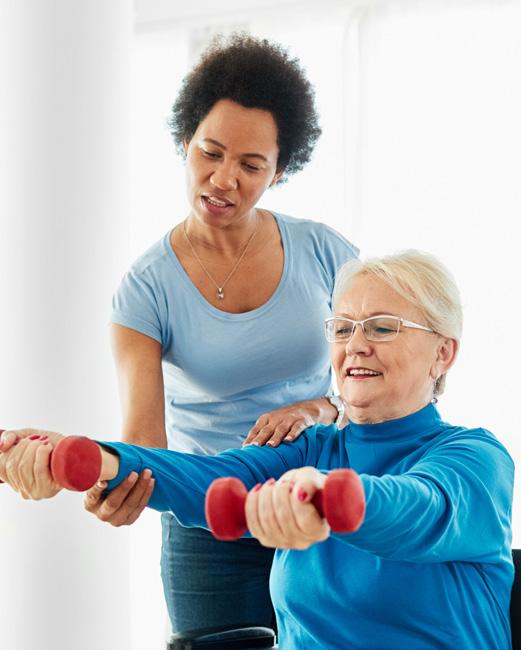
Does Medicare cover physical therapy, and if so, how much coverage do they provide? My 66-year-old husband was recently diagnosed with Parkinson’s disease and will need ongoing physical therapy to help keep him moving.
Worried Wife
Yes, Medicare does indeed pay for physical therapy along with occupational and speech therapy too, if he needs it, as long as it’s prescribed by his doctor. You’ll also be happy to know that Medicare has no limits on how much it will pay for therapy services, but there is an annual coverage threshold you should be aware of. Here’s what you should know.
To get Medicare Part B — which covers outpatient care — to help cover your husband’s physical therapy, it must be considered medically necessary and will need to be ordered by his doctor. The same holds true for occupational and speech therapy.
He can get these services as an outpatient at a number of places like a doctor or therapist office; in a hospital outpatient department; at an outpatient rehabilitation facility; at skilled nursing facilities if he is being treated as an outpatient; and at home through a therapist connected with a home health agency when he is ineligible for Medicare’s home health benefit.




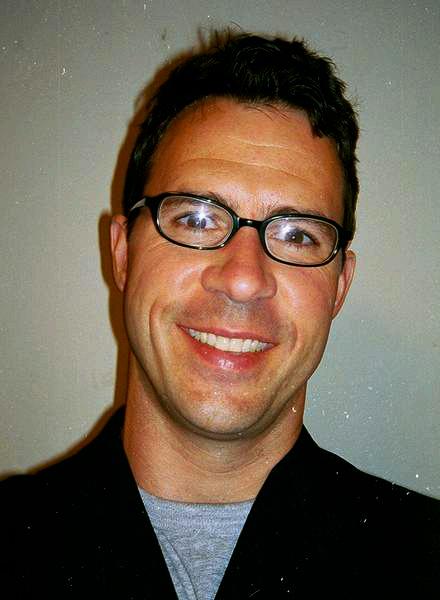
For outpatient therapy, Medicare will pay 80% of the Medicare-approved amount after you meet your Part B deductible ($226 in 2023). You will be responsible for the remaining 20% unless you have supplemental insurance.
But be aware that if his therapy costs reach $2,230 in a calendar year (2023), Medicare will require his provider to confirm that his therapy is still medically necessary. Medicare used to set annual limits on what it would pay for outpatient therapeutic services, but the cap was eliminated a few years back.
You also need to know that treatment recommended by a physical therapy provider but not ordered by a doctor is not covered. In this situation, the therapist is required to give your husband a written notice, called an Advance Beneficiary Notice of Noncoverage or ABN, that Medicare
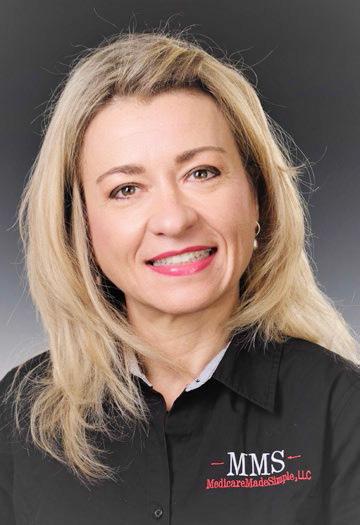
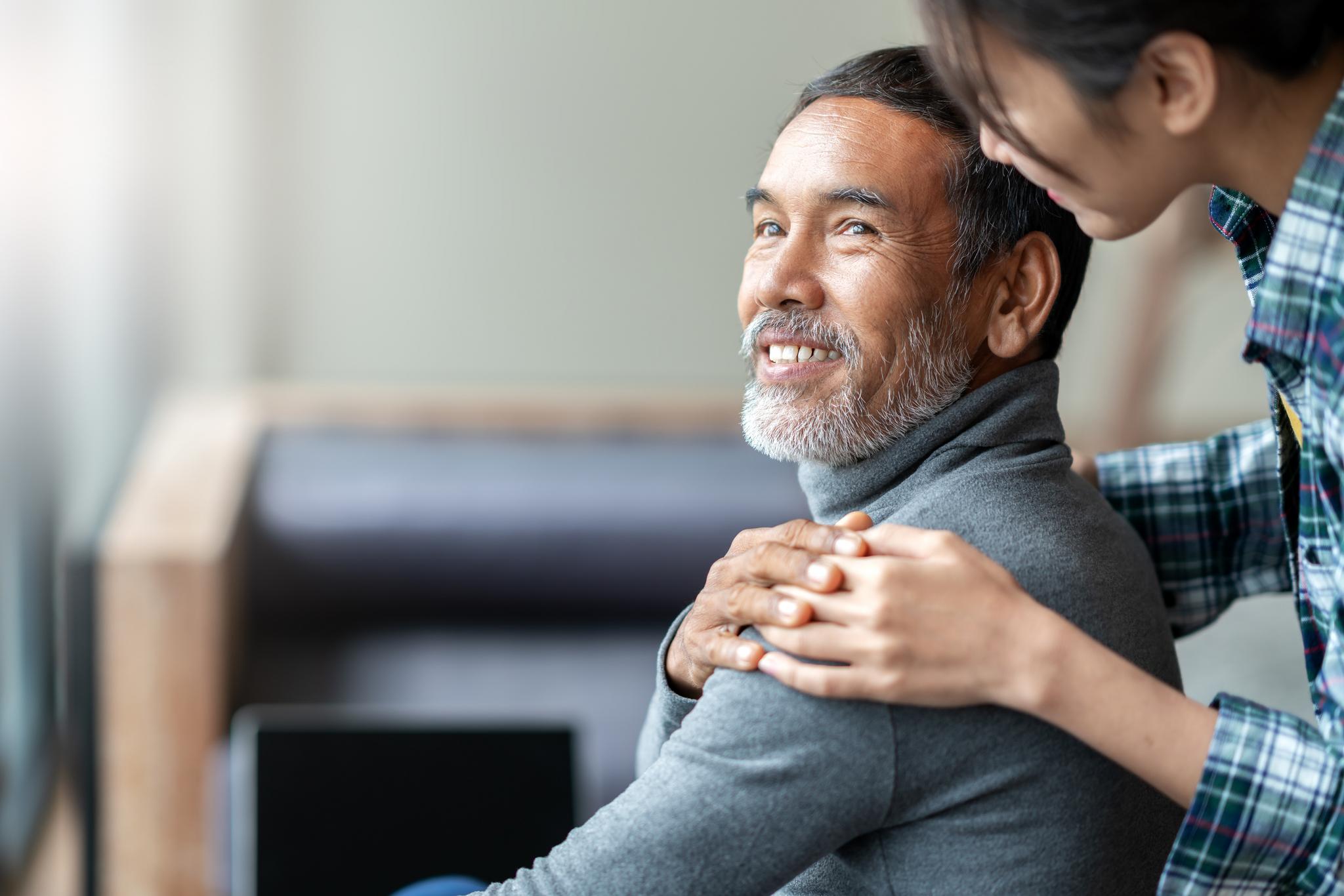
may not pay for the service. If he chooses to proceed with the therapy, he is agreeing to pay in full.

If your husband happens to need physical therapy at an inpatient rehabilitation facility like at a skilled nursing facility or at your home after a hospitalization lasting at least three days, Medicare Part A — which provides hospital coverage — will pick up the tab.
To be eligible, his doctor will need to certify that he has a medical condition that requires rehabilitation, continued medical supervision, and coordinated care that comes from his doctors and therapists working together.
Whether you incur out-of-pocket costs such as deductibles and coinsurance, and how much they are, will depend on the setting for the treatment and how long it lasts. For more information on inpatient therapy out-of-pocket costs see Medicare. gov/coverage/inpatient-rehabilitation-care.



If your husband is enrolled in a Medicare Advantage plan (like an HMO or PPO), these plans must cover everything that’s included in original Medicare Part A and Part B coverage. However, some Advantage plans may require a person to use services from physical therapy practices within an agreed network. If he has an Advantage plan, you’ll need to contact his specific plan before selecting a physical therapy provider to confirm they’re within the network.
If you have other questions about coverage and costs for therapeutic services, call Medicare at 800-633-4227 or contact your State Health Insurance Assistance Program (SHIP), which provides free Medicare counseling. Visit ShipHelp.org or call 877-839-2675 to connect with a local SHIP counselor.

As a caregiver, you may find yourself with so many responsibilities that you neglect taking good care of yourself. But the best thing you can do for the person you are caring for is stay physically and emotionally strong.

See the doctor
Trying to do everything by yourself will leave you exhausted. Don’t do it alone. Seek support from family, friends, your faith community and the Alzheimer’s Association.
Be sure to visit your physician regularly (at least annually) and listen to what your body is telling you. Any exhaustion, stress, sleeplessness or changes in appetite or behavior should be taken seriously. Ignoring these symptoms can cause your physical and mental health to decline.
If you are caring for someone in the late-stages of Alzheimer’s, talk to your health care provider about the seasonal flu shot. Being vaccinated protects both you and the person you are caring for.
No doubt you know that exercise is an important part of staying healthy — it can help relieve stress, prevent disease and make you feel good. But finding the time to exercise is another story.
Use these tips:
• Take friends and family members up on their offers to help. You can get in a good workout in a short amount of time — even a 30 minute break. Help coordinate a schedule where you have breaks to exercise and take care of your health.
• Start small — While it is recommended that you get 30 minutes of physical activity at least five days a week, even 10 minutes a day can help. Fit in what you can, and work toward a goal.
• Exercise at home — When the person with dementia naps, pull out a yoga mat and stretch, set up a stationary bike, or try exercise tapes.
• Find something you love — If you enjoy the activity, it will be easier to make it a habit.
There also are many ways you can be active with the person with dementia. Here are a few ideas:
• Take a walk together outside to enjoy the fresh air
• Go to the mall and take a stroll indoors
• Do seated exercises at home
• Dance together to favorite music
• Garden or do other routine activities that you both enjoy
Heart-healthy eating patterns, such as the Mediterranean diet, are good for overall health and may help protect the brain. A Mediterranean diet includes relatively little red meat and emphasizes whole grains, fruits, vegetables, fish, nuts, olive oil and other healthy fats. Try new recipes and involve the person with dementia. Some websites offer great tips for a good diet. Try the ones by the American Academy of Family Physicians,, the Academy of Nutrition and Dietetics and the Foundation for Medical Education and Research.
Five tips to help you cope
• Manage your level of stress. Stress can cause physical problems (blurred vision, stomach irritation, high blood pressure) and changes in behavior (irritability, lack of concentration, change in appetite). Note your symptoms and discuss with a doctor, as needed. Try to find relaxation techniques that work for you.
• Be realistic. The care you give does make a difference, but many behaviors can’t be controlled. Grieve the losses, focus on positive times as they arise, and enjoy good memories.
• Know you’re doing your best. Remember that the care you provide makes a difference and that you are doing the best you can. You may feel guilty because you can’t do more, but individual care needs change as Alzheimer’s progresses. You can’t promise how care will be delivered, but you can make sure that the person with the disease is well cared for and safe.
• Take a break. It’s normal to need a break from caregiving duties. No one can do it all by themselves. Look into respite care to allow time to take care of yourself.
• Accept changes as they occur. People with Alzheimer’s disease change over time and so do their needs. They may require care beyond what you can provide on your own. Becoming aware of community resources and care options — from home care services to residential care — can make the transition easier. So will the support and assistance of those around you.
Submitted by the Alzheimer’s Association – Central New York Chapter. For more information, visit alz.org/cny.
Identity theft affects millions of people each year and can cause serious harm. Protect yourself by securing your personal information, understanding the threat of identity theft and exercising caution.
Here are 10 things you can start doing now to protect yourself and your loved ones from identity theft:
1. Protect your Social Security number by keeping your Social Security card in a safe place at home. Don’t carry it with you or provide your number unnecessarily.
2. Be careful when you speak with unknown callers. Scammers may mislead you by using legitimate phone numbers or the real names of officials. If they threaten you or make you feel uneasy, hang up.
3. Create strong, unique passwords so others can’t easily access your accounts. Use different passwords for different accounts so if a hacker compromises one account, they can’t access other accounts.
4. Never give your personal or financial information in response to an unsolicited call or message, and never post it on social media.
5. Shred paper documents that contain personal information, like your name, birth date and Social Security number.
6. Protect your mobile device from unauthorized access by securing it with a PIN, adding a fingerprinting feature, or using facial
Q.: How do I schedule, reschedule or cancel an appointment with Social Security?
A.: For many things, you don’t need an appointment to transact business with Social Security. For example, you don’t need an appointment to file for benefits or appeal a disability decision. You can file for the following benefits online at www. ssa.gov:
• Retirement.
• Medicare.
• Spouses.
• Disability.
If you don’t want to apply for benefits online, or if you need to speak to us for any other reason, you can schedule, reschedule, or cancel an appointment by one of the following options: Calling us at 1-800-772-1213 (TTY 1-800-325-0778) between 7 a.m. to 7 p.m., Monday through Friday. Contacting your local Social Security office.
recognition. You can also add a password and adjust the time before your screen automatically locks.
7. Regularly check your financial accounts for suspicious transactions.
8. Avoid internet threats by installing and maintaining strong anti-virus software on all your devices—including your mobile device and personal computer. Use a virtual private network (VPN) to stay safe on public Wi-Fi. Do not perform certain activities that involve sensitive data, like online shopping and banking, on public Wi-Fi networks.
9. Protect yourself on social media by customizing your security settings and deleting accounts you no longer use. Also, double-check suspicious messages from your contacts, as hackers may create fake accounts of people you know.
10. Never click on any link sent via unsolicited email or text message—type in the web address yourself. Only provide information on secure websites.
We encourage you to create your own personal My Social Security account to track your earnings record. For more information, please read our publication, “Protecting Personal Information,”åå at oig.ssa. gov/files/21-540_Protecting_Personal_Information.pdf. Contact us if you see suspicious work activity on your record–you could be a victim of identity theft.
Please share this information with your family and friends.
Q.: How long do I need to work to become eligible for retirement benefits?
A.: Everyone born in 1929 or later needs 40 Social Security credits to be eligible for retirement benefits. You can earn up to four credits per year, so you will need at least 10 years of work to become eligible for retirement benefits. During your working years, earnings covered by Social Security are posted to your Social Security record. You earn credits based on those earnings. If you become disabled or die before age 62, the number of credits needed to qualify for Social Security benefits depends on your age at the time you die or become disabled. A minimum of six credits is required to qualify for Social Security benefits regardless of your age. You can create a my Social Security account to check and periodically monitor how many credits you have. Just go to www.ssa.gov/ myaccount.
Crouse Health’s addiction treatment services (ATS) has received a grant of $239,097 from New York State’s opioid settlement funds. The funding was approved by the state’s office of addiction services and supports through the comprehensive treatment programs grant. The funding will increase patient access and engagement while supporting the recruitment and retention of clinicians.
The grant will make it possible for ATS to pursue certification as a comprehensive integrated outpatient treatment program Currently Crouse co-locates an opioid treatment program and outpatient treatment program. With the integrated certification patients will no longer need to have two primary counselors in order to receive services through both programs. This will improve the patient experience and also support ongoing efforts for on demand access to treatment.
Funding will also be used for ATS clinician recruitment, patient education and the purchase of equipment needed for patient care.
Janet Sovik, a home health aide
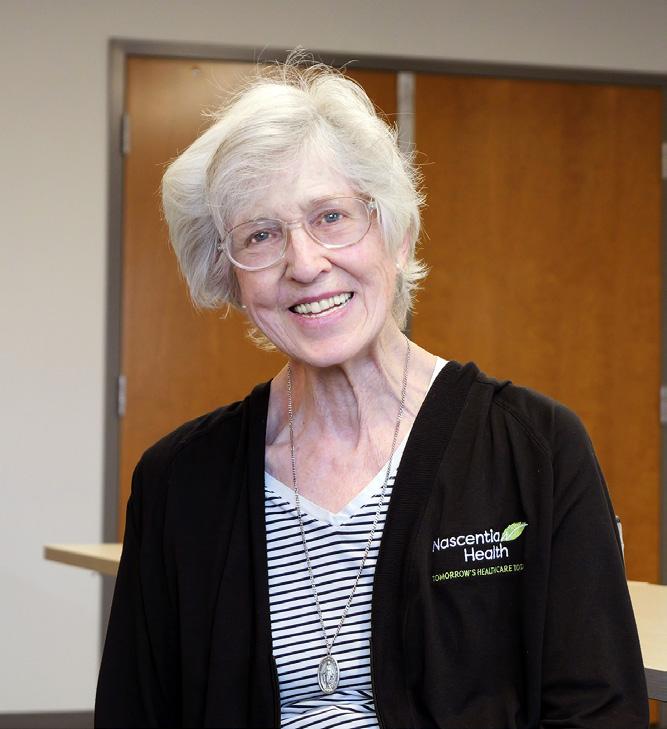
Breast Care Partners has been granted a three-year full accredi tation designation by the National Accreditation Program for Breast Centers (NAPBC), a program admin istered by the American College of Surgeons.
Formed in 2014, Breast Care Partners is a unique collaboration of breast health specialists in Central New York who have partnered to gether to ensure each patient receives the best possible breast care available. In addition to Hematology-Oncology Associates of CNY, members of the collaborative include Crouse Health, Crouse Medical Practice General Surgery, CRA Medical Imaging, St. Joseph’s Health, St. Joseph’s Imaging Associates and St. Joseph’s Physicians Surgical Services.
Board-certified general surgeon
non-profit awards presented by the CNY Business Journal.
McCabe is a retired professor and chairman emeritus in the department of emergency medicine at Upstate Medical University in Syracuse. He was a professor in the department of emergency medicine for which he was the founding chairman in 1992— where he was also instrumental in developing the residency program in emergency medicine. McCabe was also the founding fellowship director of the program in undersea and hyperbaric medicine at University Hospital.
Janet Sovik
with Nascentia Health, received the 2023 Caring Award from the Home Care Association of New York State at its annual conference in Saratoga Springs May 4. The Caring Award recognizes those who have exhibited exemplary compassion, skills and service and whose actions exemplify caring in the home care setting.
Sovik has worked for Nascentia since 1998 and is one of the agency’s most experienced and dedicated home aides. She is specialty trained to care for Alzheimer’s patients, mental health needs and hospice care, and has worked with numerous patients who require a high level of care and training. She was recognized for her exceptional dedication to caring for others in need.
Her manager says, “Janet works so hard. She is busy as a bee when she’s in a patient’s home and is an excellent communicator, always letting us know any issues her patients need addressed. Janet is just a good person. She would do anything you needed and is someone we all count on.” Her colleague says, “Janet never says no to helping a client. She always goes the extra mile and her clients just love her.”
Nascentia Health has posted a video on YouTube honoring Sovik. It can be viewed at https://youtu.be/ NzO60p0tcbY.
These partners all work together to provide a seamless, multidisciplinary program of breast care services — from initial imaging and screening all the way through surgical intervention and post-procedure support, treatment and management of disease, psychosocial and nutritional support, rehabilitation and survivorship. They are also committed to benign breast health and education in our community.
Accreditation by the NAPBC is only given to those centers that have voluntarily committed to provide the highest level of quality breast care and that undergo a rigorous evaluation process and performance review. During the survey process, the center must demonstrate compliance with standards established by the NAPBC for treating women who are diagnosed with the full spectrum of breast disease. The standards include proficiency in the areas of center leadership, clinical management, research, community outreach, professional education and quality improvement.
“A breast center that achieves NAPBC accreditation has demonstrated a firm commitment to offer patients every significant advantage in their battle against breast disease,” said Breast Care Partners Program Director Janet Ricciardiello, a registered nurse.
Receiving care at a NAPBC-accredited center ensures that a patient will have access to:
• Comprehensive care, including a full range of state-of-the-art services
• A multidisciplinary team approach to coordinate the best treatment options
• Information about ongoing clinical trials and new treatment options
• Quality breast care close to home
For more information about Breast Care Partners visit: breastcarepartners.com.

Ryan M. Walker has joined Oswego Health to provide care at the Center for Surgical Services. Walker is now part of a team of more than 100 physicians and advanced practice providers employed by Oswego Health and the 270 providers on the medical staff representing multiple specialty services across the community.
Ryan WalkerWalker’s professional interests include breast surgery, colorectal surgery, gallbladder surgery and hernia repairs, with an emphasis on utilizing minimally invasive techniques. Walker is also a DaVinci-certified robotic surgeon.

Before joining Oswego Health, Walker practiced in the Albany area at both St. Peter’s Health Partners and St. Mary’s Healthcare.
He graduated from Ithaca College before earning his medical degree at the American University of the Caribbean in 2007. Walker completed his post-graduate training along with his chief residency at York Hospital in Pennsylvania.
Physician John McCabe, former
chief executive officer of Upstate University Hospital and senior vice president for hospital affairs at SUNY Upstate, recently received the Cazenovia College’s Distinguished Service Award.
McCabe received his MD degree from the Upstate Medical College of Medicine in 1979, and he completed a residency in emergency medicine at the Wright State University School of Medicine in Dayton, Ohio.
“It is an honor to be able to present this award to Dr. John McCabe,” said Kenneth Gardiner, chairman, Cazenovia College board of trustees. “John truly exemplifies the ideals, goals and mission of Cazenovia, and I am extremely thankful for all of the work that he has done in support of the college.”
St. Joseph’s Health announced
physician Ranier Horton has joined St. Joseph’s Health Hospital as a hospitalist. A board-certified physician, Horton completed his residency at St. Joseph’s Health and continues to provide care to patients as a hospitalist.
 John McCabe
John McCabe
McCabe has served the college as a trustee, chairman of the academic affairs committee and as a member of the board executive committee.
In the past six months, he has played a large role as a representative on the board Teach Out Committee, providing countless hours of service attending college leadership meetings and representing the board on numerous working groups.
McCabe serves in a leadership role for other community-focused organizations in Central New York, including board chairman of the Rescue Mission Alliance, board chairman of the Loretto Management Corporation and volunteer and medical director for Cazenovia Area Volunteer Ambulance Corps (CAVAC).

Recently, McCabe received the board leadership award on behalf of his service to Loretto at the 2023
Horton focuses on the general medical care of hospitalized patients, treating a wide variety of disease processes with a high level of acuity. He provides medical continuity throughout patient stays. This continuity of care has been shown to increase patient satisfaction, reduce hospital lengths of stay and lessen the chances of being re-hospitalized.
“I’m proud to be a hospitalist at St. Joe’s because it allows me to provide compassionate and comprehensive care to patients with a wide variety of acute medical conditions,” Horton said. “Having completed residency at St. Joe’s, it’s a privilege to continue working in an environment that values patient-centered care and makes a meaningful difference in the lives of our patients and their families.”
Horton holds a Doctor ofOsteopathic Medicine (DO) degree from Touro College of Osteopathic Medicine in Middletown. He previously earned his master’s degree in medical sciences from Loyola University in Chicago, Illinois, and his Bachelor of Science degree in molecular and cellular biology from University of Illinois.
ConnextCare has concluded a nearly 10-month construction project at its Pulaski location and is now seeing patients at the new External Respiratory Center (ERC).
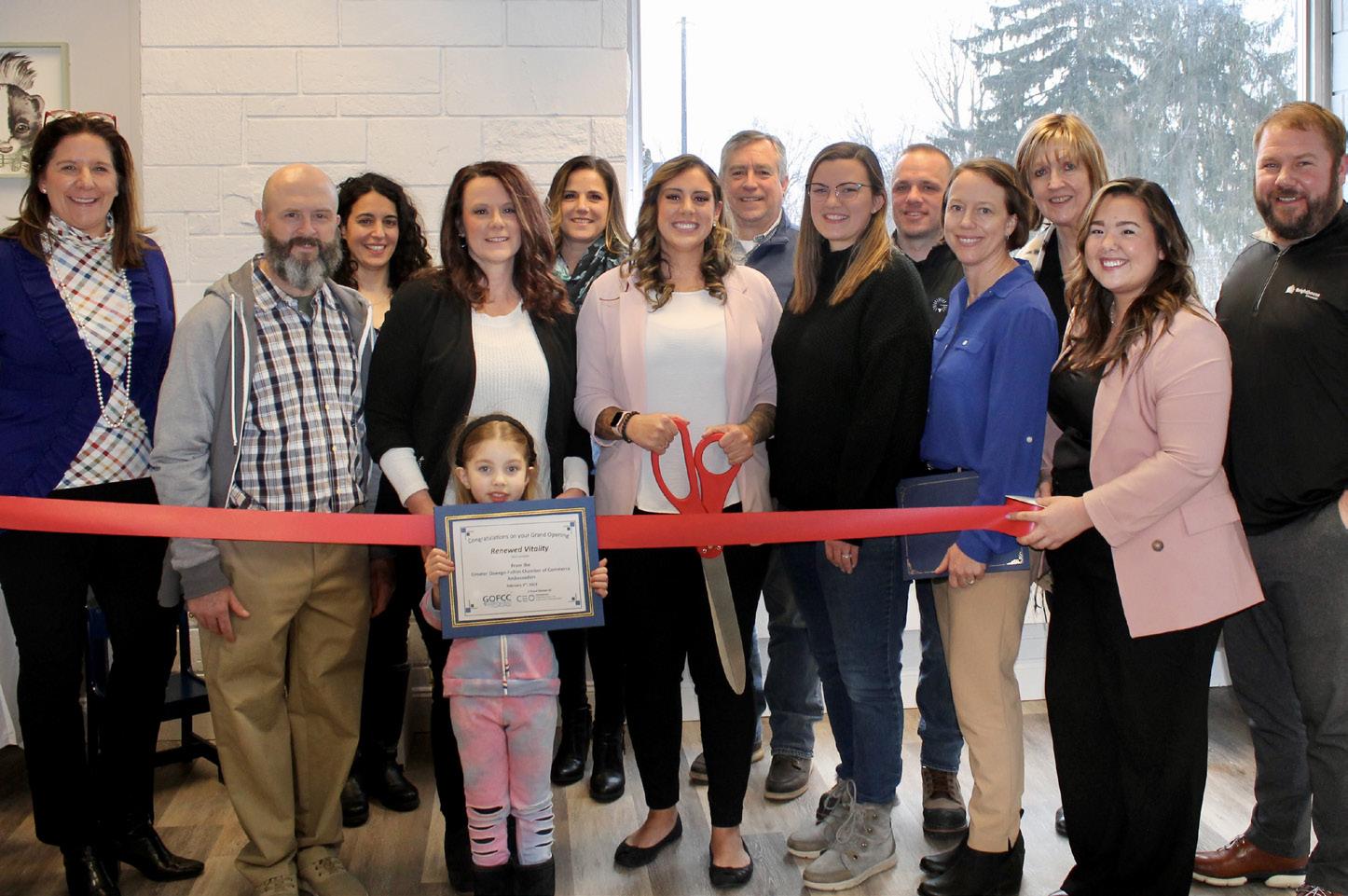
Construction project, which started last summer, included 800 squarefeet of additional clinical space, with a covered canopy and testing center; four electric car charging stations; a gazebo powered and equipped with Wi-Fi; an 1,100 square-foot walking trail for staff and community use and .7 acres of new parking spaces and reconstruction of the existing staff parking lot.

The new ERC, which started treating patients May 5, includes
three new exam rooms, two of which are negative-pressure rooms. These spaces will be used for acute care appointments to allow for the continuous air exchange within the space to keep staff and patients safe from suspected communicable diseases. The negative pressure rooms will also be utilized to complete pulmonary function testing for patients with COPD as well as spirometry testing to assess asthmatic patients, as these two tests have not been easily accessible locally throughout the pandemic. There is also a small lab on site to allow for point of care testing for things such as flu, COVID-19 and strep throat, so when possible, patients will leave
Renewed Vitality, a health and wellness therapeutic treatment center, recently celebrated the opening of its new office in Fulton with a ribbon cutting ceremony. The business was previously located in Oswego and is owned by registered nurse Cassandra Cassandra Brown. On-hand for the event were, from left: Fulton Mayor Deana Michaels; Curtis Bonnell, Brown’s father; Brittney Jerred, representing NYS Assemblyman Will Barclay; Betti
Bonnell, Brown’s mother; Bridget Dolbear, Greater Oswego-Fulton Chamber of Commerce, (GOFCC); Brown, William Grace, GOFCC; Alexandra Fitzpatrick, Quintessential Creative; Mark French, GOFCC; Meghan Florkowski, director, WISE Women’s Business Center; Barb Stone, WISE Women’s Business Center; Taylor Davis, member engagement and operations, GOFCC; and Craig Fitzpatrick, PathFinder Bank. Front: Quinn Fitzpatrick.
with a confirmed diagnosis and treatment plan to address their condition.
“We are very excited to introduce our patients, staff and community to this progressive model of care,” said Tricia Peter-Clark, president and CEO of ConnextCare. “The External Respiratory Center is the first clinical space of this kind in our region. Over the last three years of the COVID-19 pandemic, the ConnextCare staff have witnessed the many challenges that our patients have encountered when trying to seek services that
they need most and these updates to our Pulaski office will greatly improve our ability to deliver these vital services and the best quality of care to them.”
This project was made possible, in part, due to an ARPA award received from the U.S. Treasury and awarded by the Oswego County Legislature, as well as funds received through American Rescue Plan and National Grid as part of its NY EV Make-Ready Program.
Crouse Health has been ranked as one of the 30 most-trusted healthcare brands in the United States according to a just-released research report published by Monigle, an independent healthcare consulting company.
Crouse is ranked 26th on the list.

Now in its sixth year, Monigle’s “Humanizing Brand Experience” study examines how healthcare systems throughout the country are enhancing the patient experience to meet the ever-changing healthcare landscape.
The report draws on research from more than 25,000 healthcare consumers who evaluated 207 brands across 64 markets to identify the strongest healthcare experiences in the nation.
All health systems in the report were evaluated using Monigle’s Humanizing Brand Experience framework, which asked consumers to share their perceptions across a range of emotional, intellectual and behavioral drivers. Using their feedback as a guide, brand scores were then calculated as a composite based entirely on consumer perceptions, adjusted by market.
The research looked at:
• what consumers see and hear from a brand, including its ‘buzz’, aesthetics and environmental spaces
• what consumers associate about a brand, including its employees, outcomes and transparency
• the emotional connection a brand builds with consumers, including a sense of security and confidence
• how a brand builds engagement with consumers
“Trust is such a key foundational element in healthcare and it is gratifying to be recognized and listed among industry leaders,” says Crouse President and Chief Executive Officer Seth Kronenberg, MD. “This is validation that our dedicated focus on ‘every moment matters’ is making a difference for our patients, their family members and our community.”
Crouse Health is a nonprofit organization serving Central New York. In operation since 1887, Crouse is licensed for 506 acute-care adult beds and 57 bassinets, and serves more than 23,000 inpatients, 56,000 emergency services visits and more than 600,000 outpatients a year from a 16-county area in Central and Northern New York.
be happier he had a choice for treating his prostate
Frank chose non-surgical CyberKnife® at HOA –offering 5 treatments instead of 35!

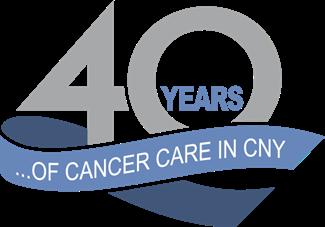
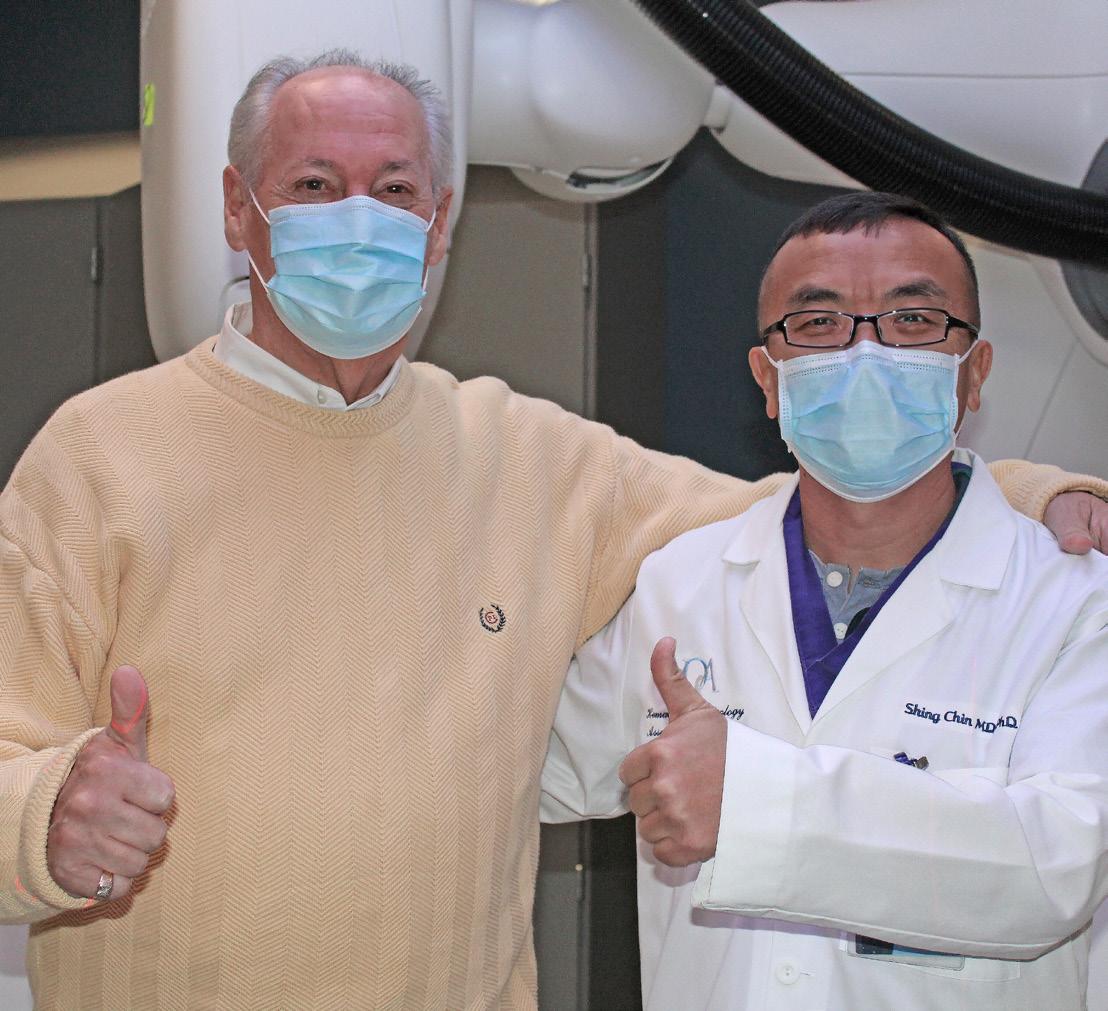
“The original diagnosis was to treat my prostate cancer with seven weeks of radiation, five days a week. I was kind of upset that I was never given the option of CyberKnife,” said Frank. “The precise radiation achieved by CyberKnife, far fewer treatments, and the personalized care I received from Dr. Chin and his team made my decision an easy one. Better, the treatment was a real success!”


